Garden focal points transform ordinary outdoor spaces into captivating landscapes that draw the eye and create memorable experiences. A focal point serves as a visual anchor, providing structure and drawing attention to specific areas while breaking up monotonous plantings. Whether you're designing a small courtyard or expansive backyard, strategic placement of these elements can make your garden feel more intentional and sophisticated. The right focal point creates visual interest, adds depth and personality, while serving as a destination that entices visitors to explore your outdoor space. From water features to architectural elements, each focal point offers unique benefits for enhancing your garden's aesthetic appeal and functionality.
1. Tiered Garden Fountain Focal Point

Tiered fountains create elegant focal points with multiple levels of cascading water, ranging from compact designs to impressive multi-level centerpieces. These traditional water features produce melodic sounds that attract birds while creating peaceful atmospheres perfect for meditation and relaxation. The hypnotic beauty of water in motion creates captivating displays that draw the eye and soothe the soul, whether featuring cascading tiers or simple bubbling designs. Consider placing your tiered fountain in a central garden location where it can be viewed from multiple angles. Choose fountain styles that harmonize with your garden's theme and architectural style, from ornate classical designs to sleek contemporary versions. The gentle water flow between tiers provides continuous visual and auditory interest throughout all seasons.
2. Contemporary Garden Sculpture Focal Point
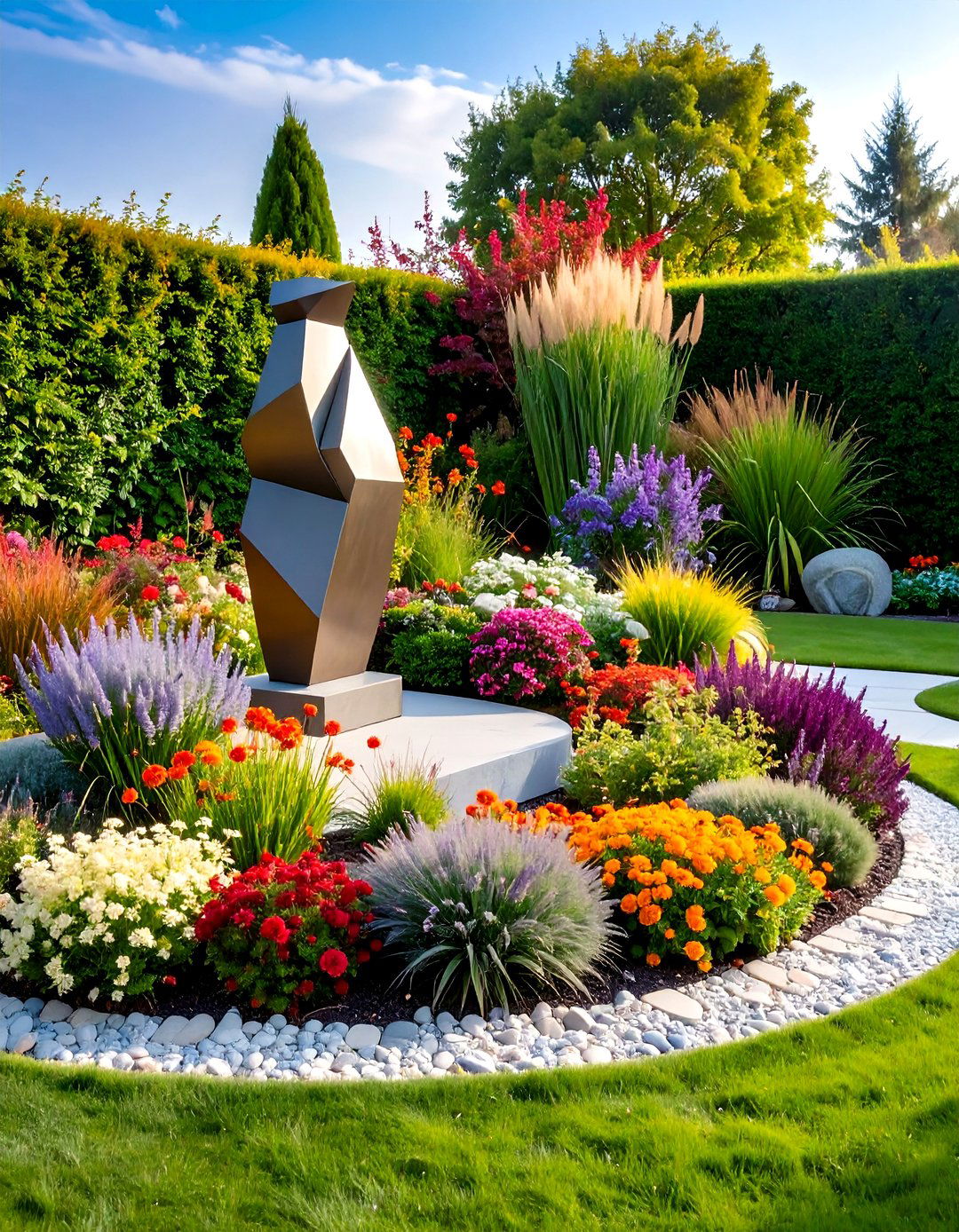
Garden sculptures bring artistic touches to outdoor spaces, transforming gardens into personalized environments whether featuring modern abstract designs or traditional statues. Modern-looking statues and sculptures available in garden centers range from contemporary art to natural rock formations, offering alternatives to classical white statues. These focal points work especially well during winter months when flowering plants are dormant. Strategic placement at pathway ends or central positions ensures sculptures complement natural surroundings while drawing maximum attention. Choose pieces made from weather-resistant materials like stainless steel, resin, or stone to maintain visual appeal year-round. The key is selecting sculptures that evoke the emotions you want to feel in your garden space.
3. Specimen Tree Garden Focal Point
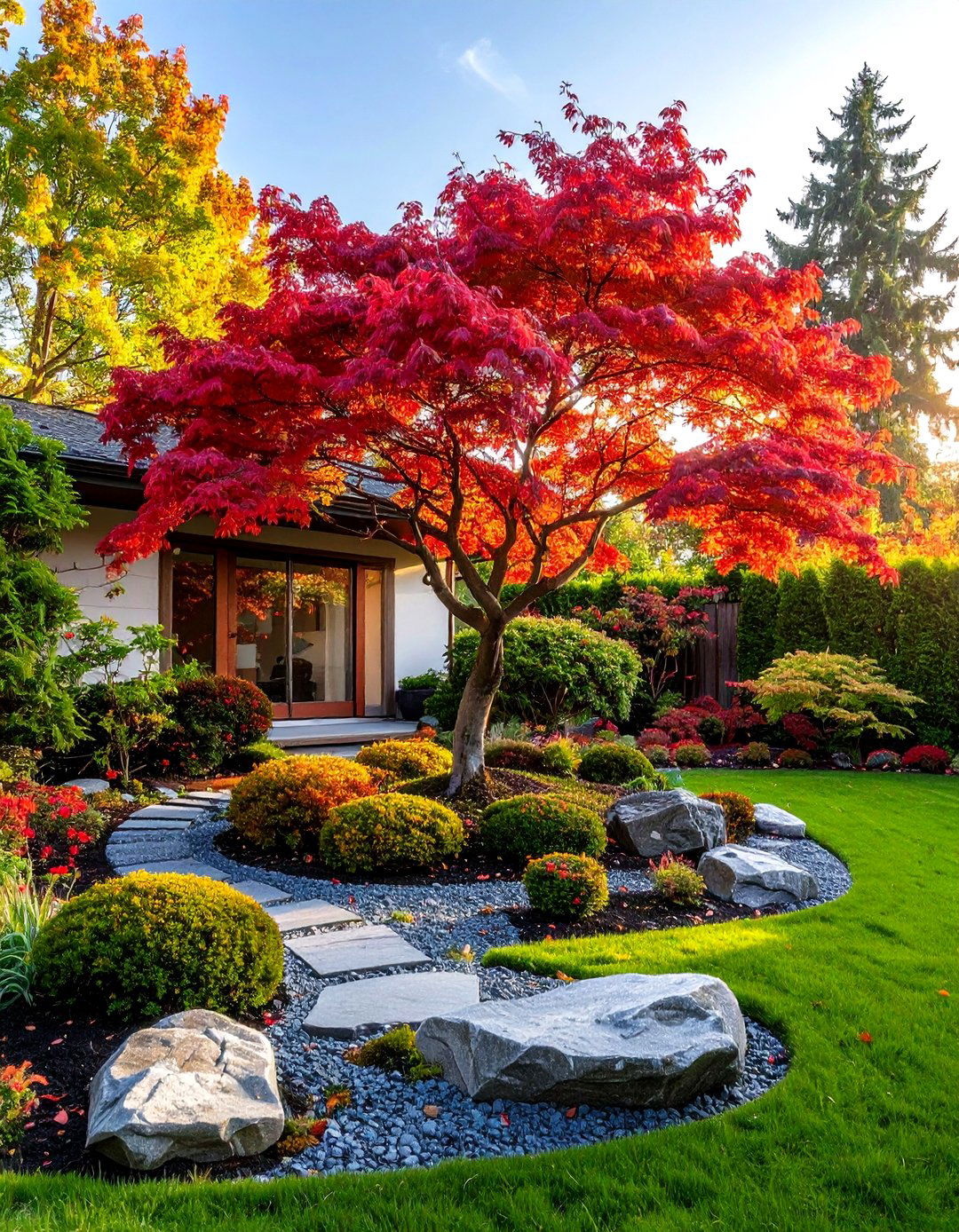
Specimen trees are planted apart from other trees as stand-alone garden features that provide focal points while offering shade to houses or other plantings. Japanese maples are gorgeous specimen trees with interesting shapes, pretty leaves, and excellent fall foliage, particularly varieties like 'Crimson Queen' that stay smaller. Small specimen trees can focus attention on front doors when planted to one side of entrances, or provide focal points for different backyard areas. Consider your climate, soil, and hardiness zone when selecting appropriate species. The traditional placement of specimen plants in isolation creates focal points while drawing attention to the beauty or uniqueness of the individual tree. Choose trees with year-round interest through flowering, fruiting, or distinctive bark patterns.
4. Garden Pergola Focal Point
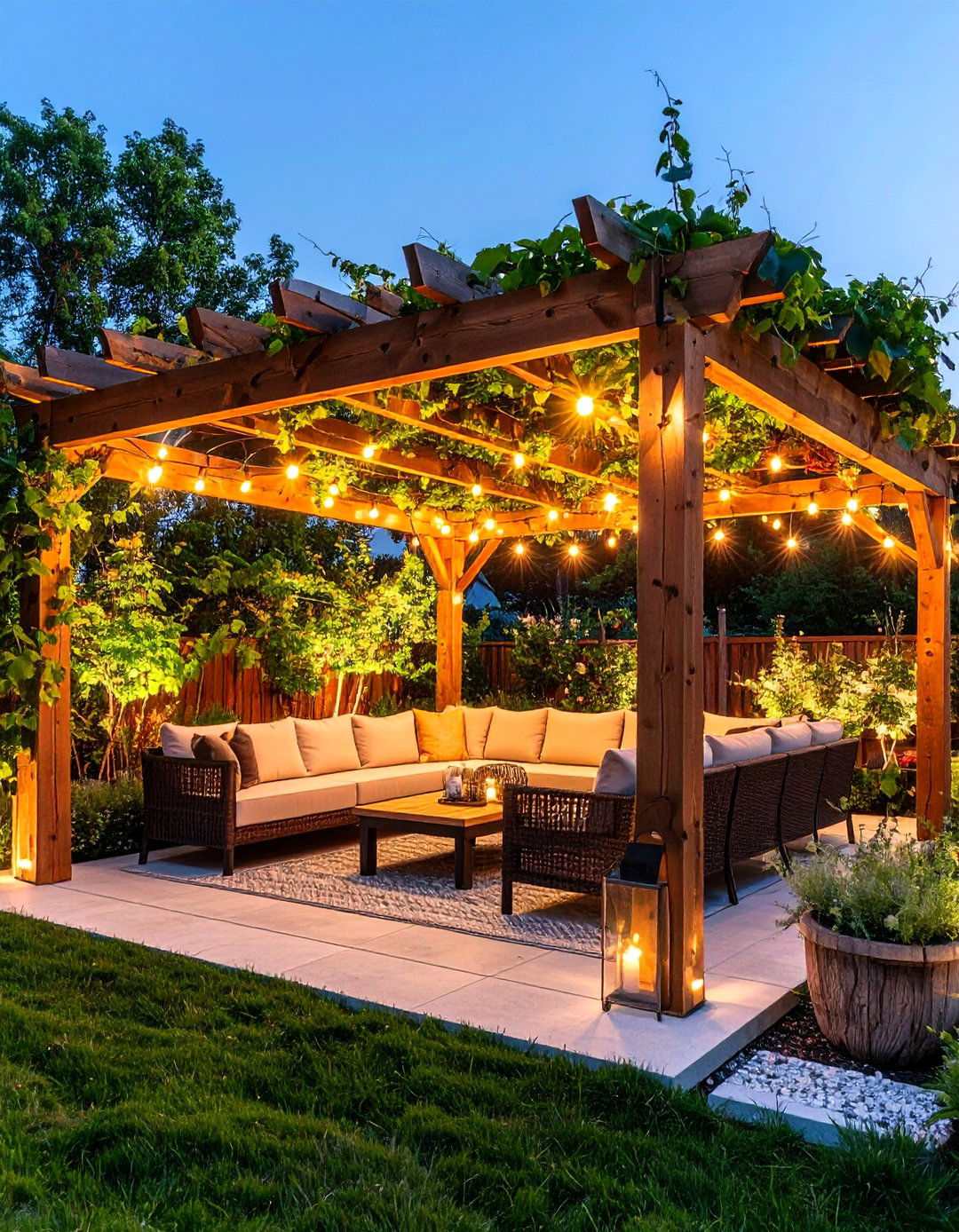
Pergolas are architectural features that completely transform spaces from simple into multi-functional outdoor living areas that blur the line between indoors and out. These linear structures with pillars support flat crossbeams and open latticework often covered in vines to shade walkways or connect buildings. Pergolas offer larger shaded areas making them ideal for outdoor living spaces, with climbing plants like wisteria, grapevines, or passionflower providing lush natural roofing. They can incorporate lighting, fans, heating, and solar panels without cluttering the space or compromising design. Position pergolas to frame views, create outdoor rooms, or provide covered walkways between different garden areas. Their substantial presence makes them excellent anchor points for larger landscape designs.
5. Fire Pit Seating Garden Focal Point
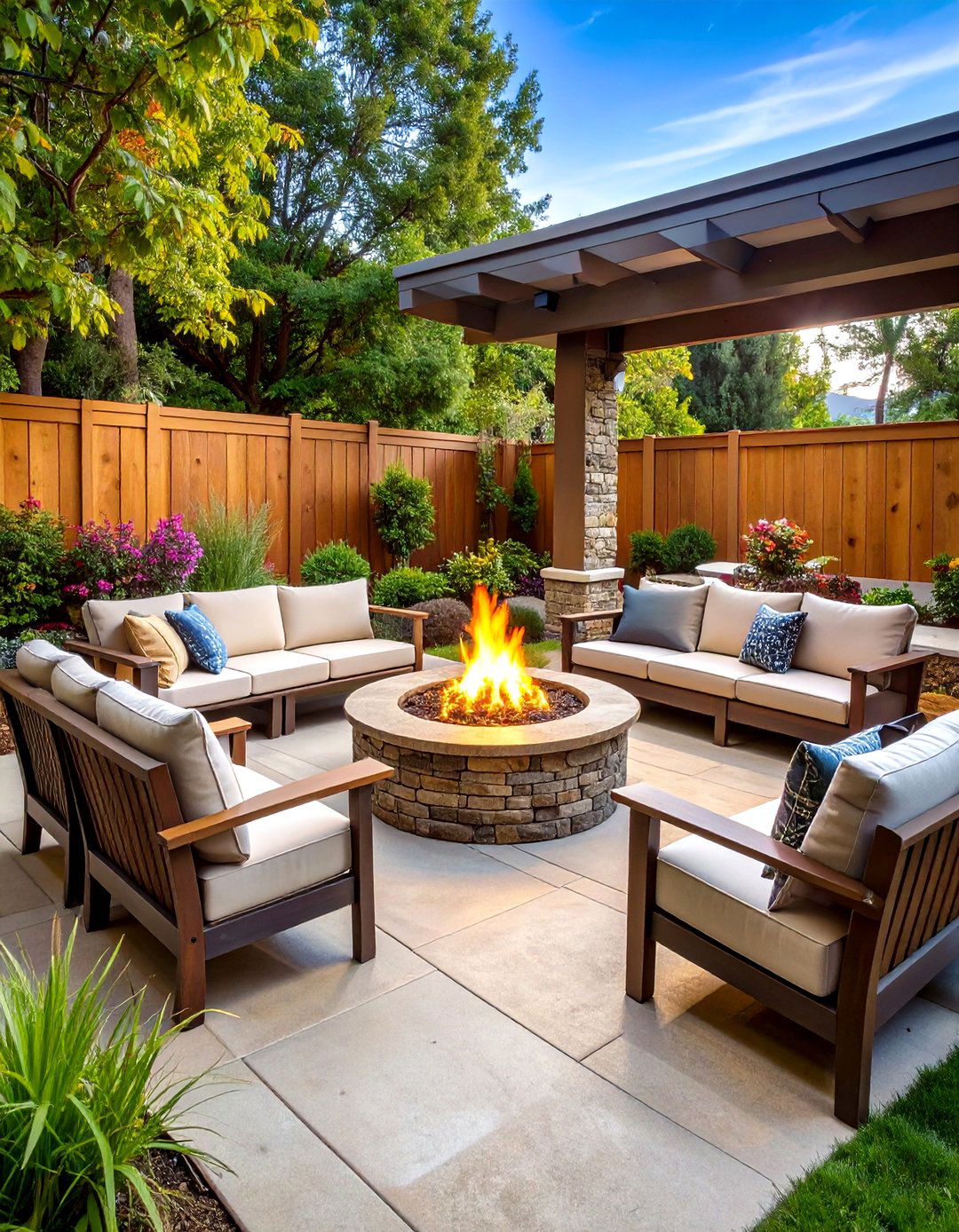
Fire pits serve as hearts of outdoor gathering areas, with seating arrangements that mirror the pit's shape creating defined areas that naturally draw guests in. Fire pits create warm, inviting focal points that enhance ambiance and functionality of outdoor areas, making them worthwhile additions that can yield over 50% ROI. They anchor and activate gathering spaces, with their greatest utility being their power to bring family and friends together. Above-ground fire pits become backyard focal points that should be placed where they balance with other large design elements. Incorporate built-in seating or arrange furniture in circular patterns to encourage conversation. Gas-fueled designs offer maintenance-free alternatives to traditional wood-burning pits while providing the same cozy atmosphere.
6. Water Wall Garden Focal Point

Water walls are modern features where blades allow curtains of water to continuously flow over and into small basins, available as pre-made units or custom installations. These vertical water features maximize visual impact in limited spaces while creating dramatic effects through the interplay of water and light. Water features provide focal points while creating tranquil atmospheres that affect all senses through therapeutic sounds of running water. Water walls work particularly well in contemporary garden settings where their clean lines complement modern architecture. They can make gardens look bigger by serving as "nature's mirror" while attracting wildlife from insects to birds. Consider incorporating LED lighting to enhance nighttime drama and extend viewing pleasure into evening hours.
7. Garden Arbor Focal Point
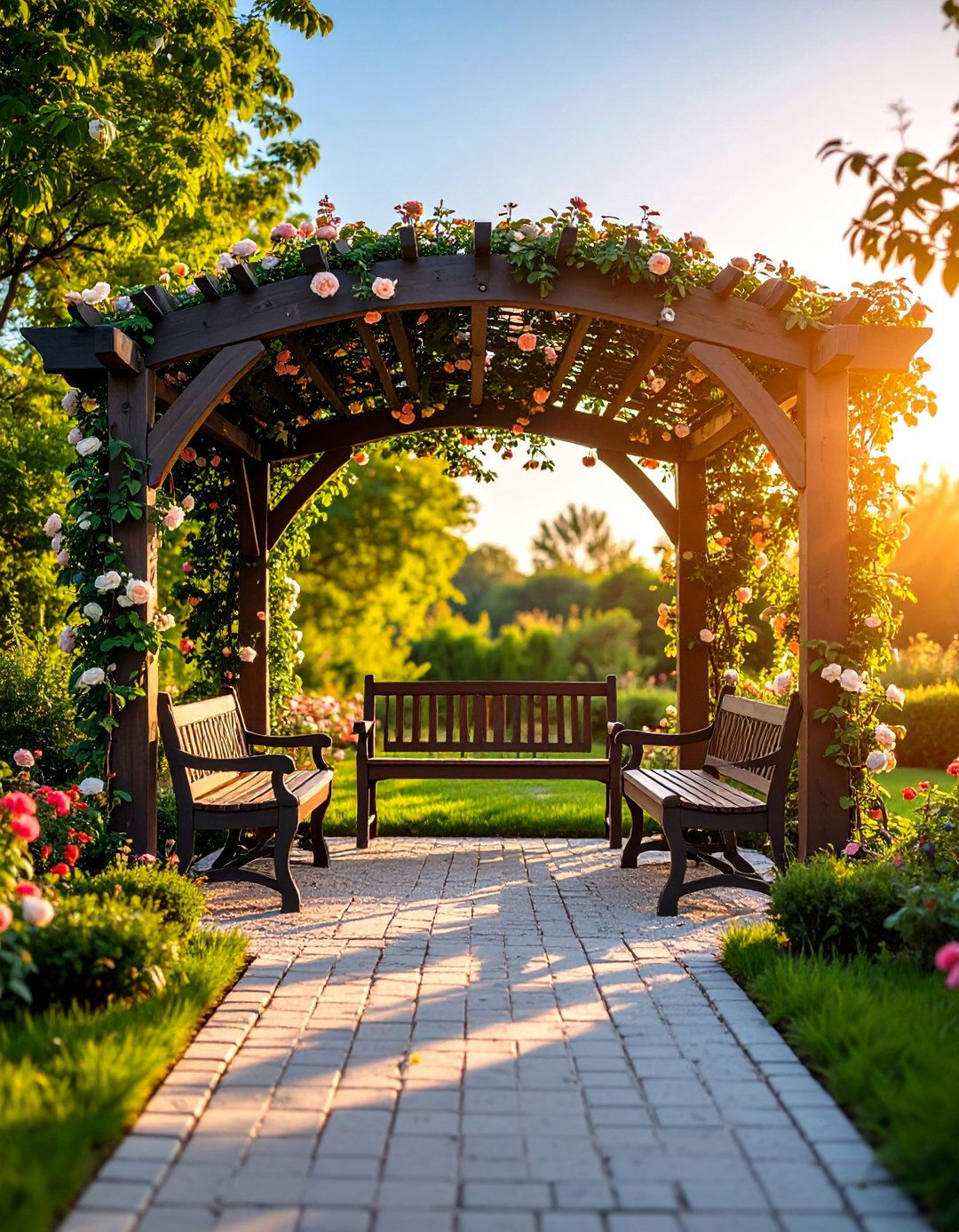
Arbors are freestanding, plant-supporting structures with open roofs and at least two walls that can create shady areas, act as focal points, or serve as entry points. These architectural masterpieces add elegance to outdoor spaces with gracefully arched structures and intricate designs that become focal points drawing the eye and creating grandeur. Arbors work perfectly as garden entryways for climbers like roses or honeysuckle, creating fragrant, romantic passages. They define walkways or paths in gardens while providing stunning gateways when entering beautiful, relaxing spaces. Use them to create focal points at pathway intersections where they provide resting spots for the eye during garden journeys. Consider adding benches underneath for intimate seating areas surrounded by climbing vegetation.
8. Large Container Garden Focal Point
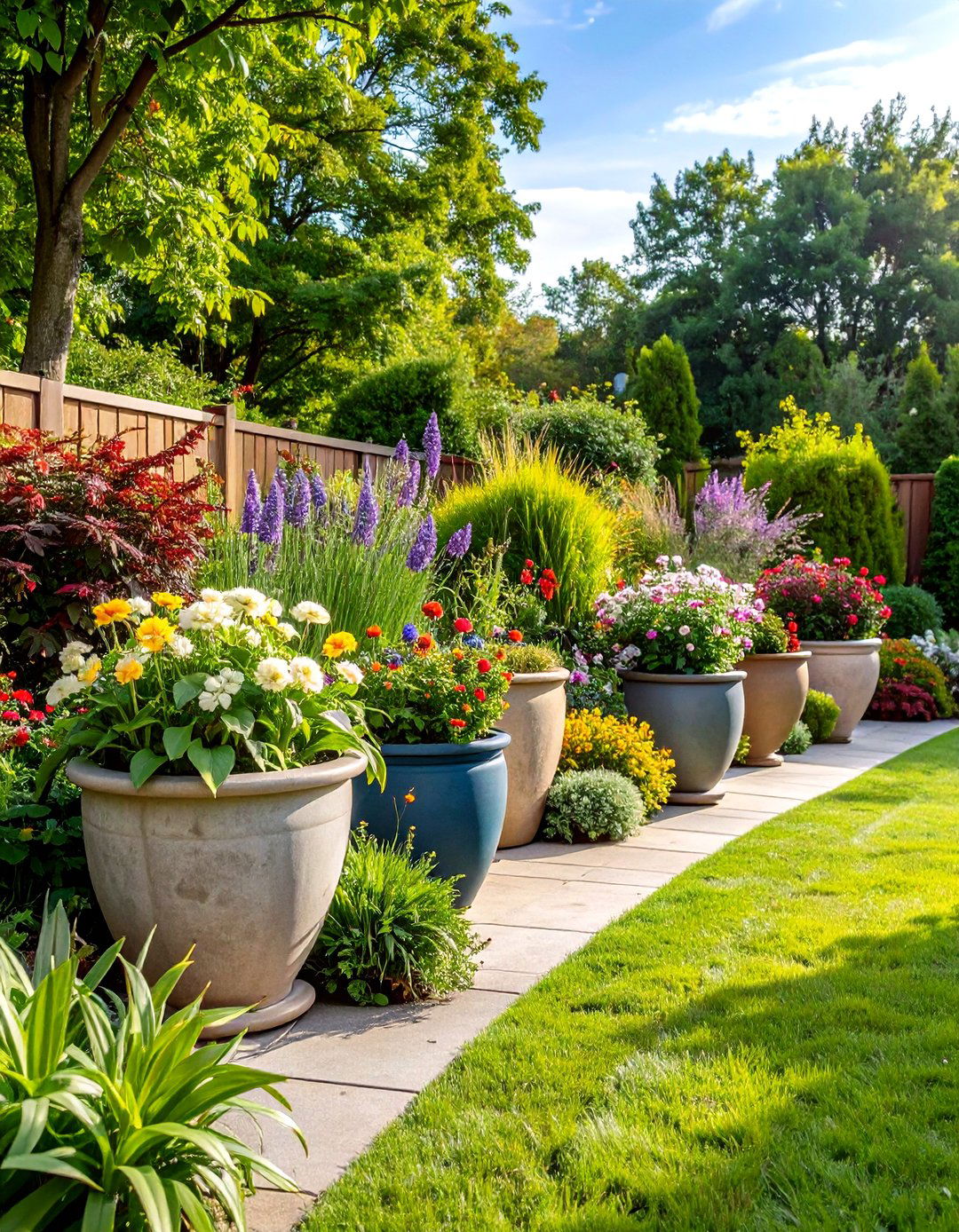
Large containers work as focal points when nestled in garden beds, drawing focus and encouraging eyes to wander over surrounding plants in slower appreciation. Empty ceramic containers or potted plants can be used as focal points, with the key being strategic placement for maximum visual impact. Garden planters are staple features for creating focal points, particularly when showcasing favorite plants and flowers in stunning containers. Choose oversized vessels made from materials like ceramic, stone, or metal that complement your garden's style. For larger lawns, consider oversized garden elements placed where they're visible but won't hinder regular activities. Position large containers at pathway intersections, courtyard centers, or as anchors for planting beds to create immediate visual interest and structure.
9. Garden Trellis Focal Point
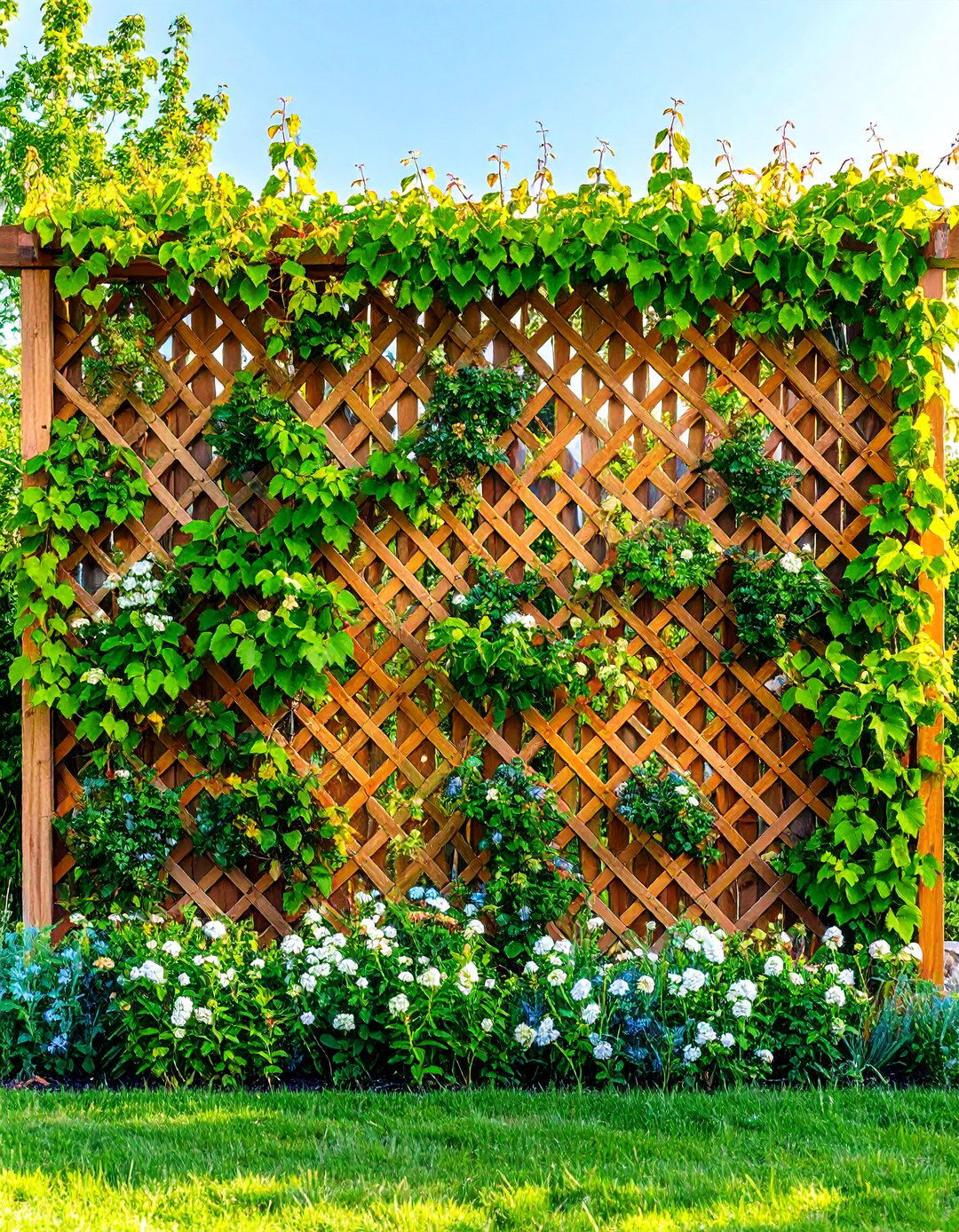
Trellises add vertical dimensions to outdoor spaces or create focal points in small areas, with unique options including repurposed windows, doors, or gates. These structures function as screens, dividers, or plant supports, perfect for climbing varieties that create living walls. Trellises are open frameworks or lattice that can be affixed to walls, pergolas, or staked into ground as standalone features. They become focal points and gateways while providing something pleasing to look at when plants have gone dormant. Consider using trellises to define spaces, hide unsightly views, or create privacy screens. They provide plant support while acting as beautiful accents to otherwise empty walls or additions to pergolas for living wall effects. Choose materials and designs that complement your garden's overall aesthetic.
10. Classical Statue Garden Focal Point
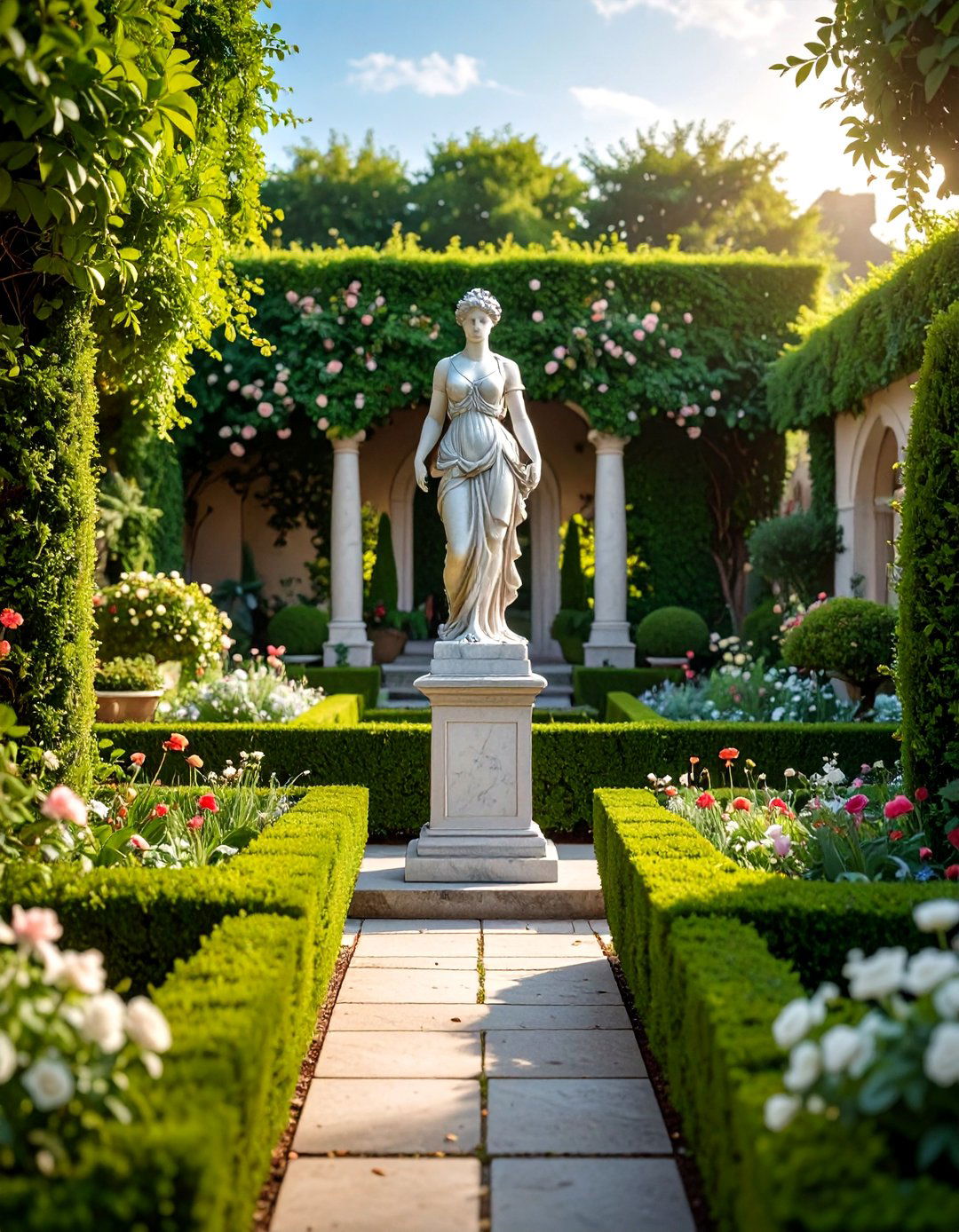
Classical marble statues have been used since ancient Egypt to represent gods and goddesses, with Renaissance sculptures becoming more realistic and naturalistic. Weathered versions of classical statues in grey colors look older and don't stick out inappropriately in modern garden settings like bright white versions. These timeless pieces work well in formal garden settings where symmetry and traditional design elements are emphasized. Anchor formal gardens with focal points at centers of traditional beds edged with clipped boxwood hedges, choosing sculptures with simple forms like obelisks. For formal courtyards or parterres, one-of-a-kind sculptures placed front and center create sophisticated focal points. Position classical statues where they can be viewed from multiple angles and consider the backdrop to enhance their prominence.
11. Pond Garden Focal Point
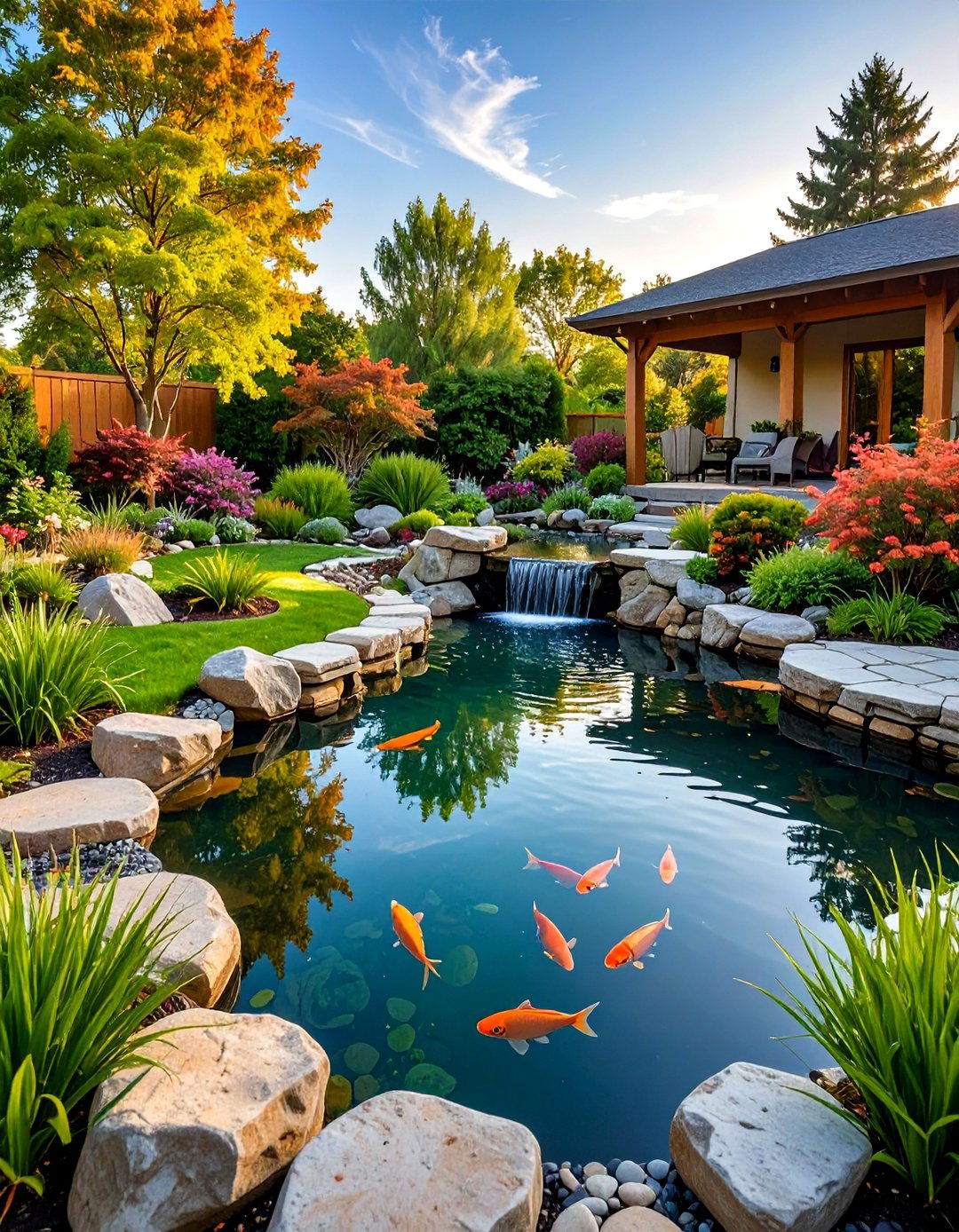
Ponds are usually integrated into landscape plans primarily to break up green space in back gardens with added features of large rocks, bridges, or fountains. Ponds attract wildlife naturally, inviting and supporting visitors from tiny insects to bathing birds to visiting frogs and turtles. These water features create reflective surfaces that double garden beauty while providing habitats for aquatic plants and animals. Narrow pools mirror brilliant blue skies above, casting light across courtyards and incorporating reflecting pools into smaller gardens. Consider adding koi or other ornamental fish for additional movement and color. However, stagnant water can attract mosquitos, so prepare to add mosquito fish, safe additives, or pumps that circulate water. Position ponds where they can reflect sky, trees, or architectural features for maximum visual impact.
12. Outdoor Fireplace Garden Focal Point
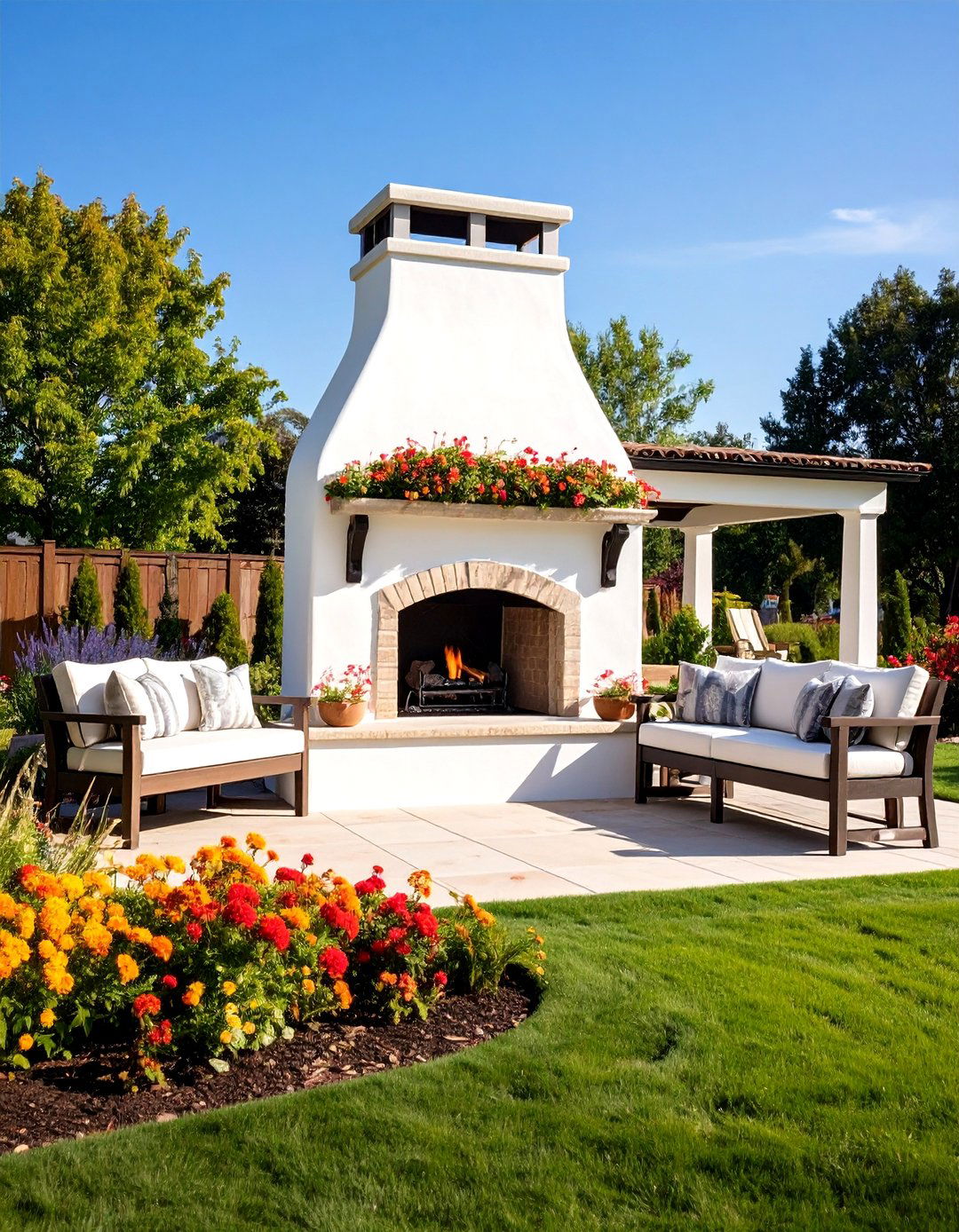
Outdoor fireplaces offer luxurious spins on fire pits, perfect for rooftop patios and custom installations that add elegance to outdoor spaces. Large outdoor fireplaces serve as focal points for backyard barbecue and dining areas, creating prominent canvases to express landscape style. These substantial features provide both warmth and dramatic architectural presence in garden settings. Double-sided fireplaces can divide lounge and dining areas while making spaces feel both separated and connected through clear views. They create defined areas that naturally draw guests while accentuating focal points through strategic positioning. Consider incorporating built-in seating, storage, or cooking areas to maximize functionality. White stucco fireplaces with bench seating keep looks clean and bright, creating compelling contrasts with dark greens and organic plant forms.
13. Garden Gate Focal Point
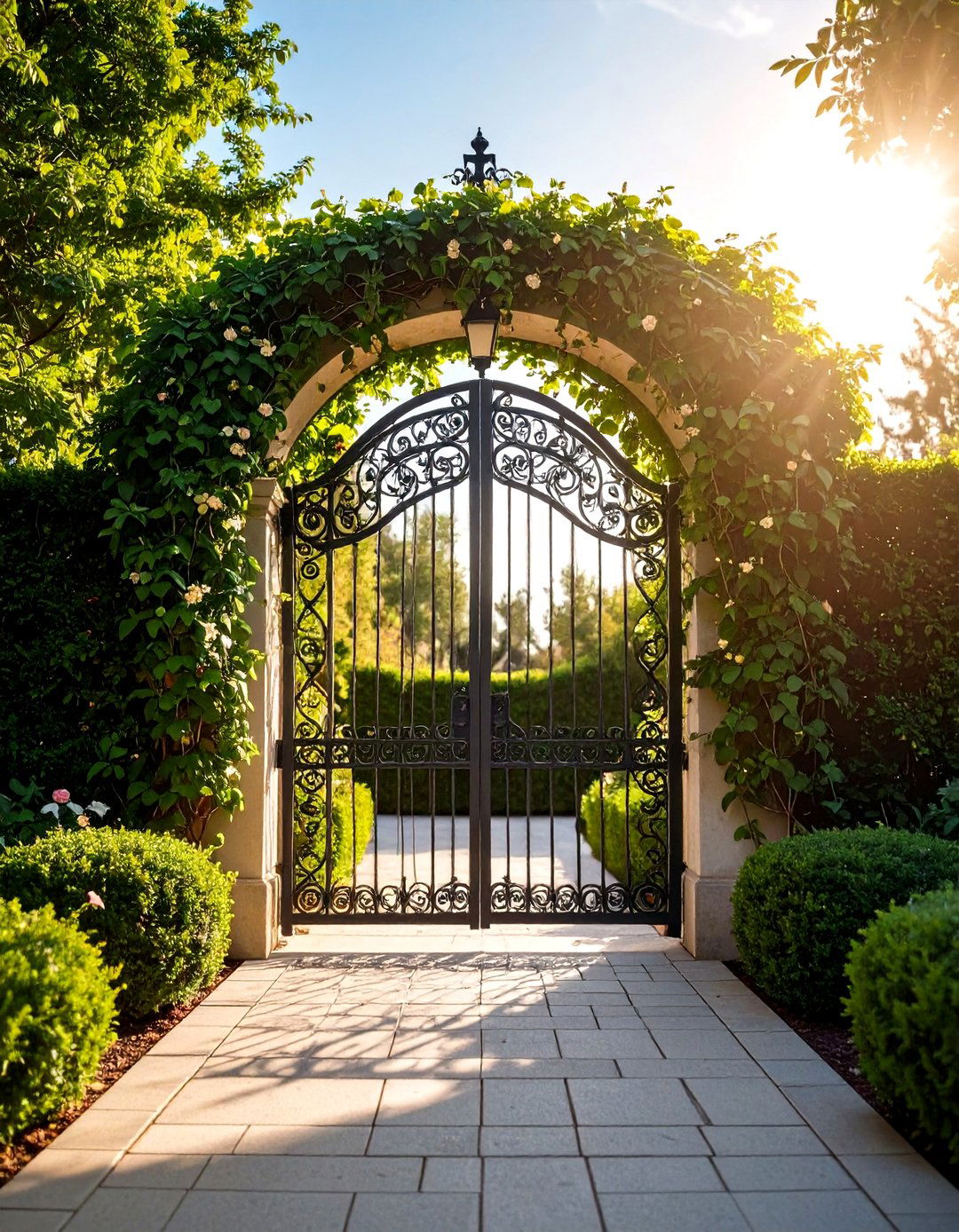
Garden gates create focal points when surrounded by simplified planting palettes with all green hues and masses of one or two plant types. These architectural elements serve as both functional entrances and artistic statements that define transitions between garden spaces. Gates can become focal points and gateways, giving you something pleasing to look at while creating interactive retreats. Choose materials that complement your garden's style, from wrought iron for formal settings to rustic wood for cottage gardens. Curved pathways leading to iron gates leave visitors wondering what lies beyond, creating mystery and encouraging exploration. Consider framing gates with climbing plants, overhead arbors, or flanking pillars to enhance their visual impact. Position gates at key sight lines from houses or seating areas for maximum effect.
14. Colorful Plant Garden Focal Point
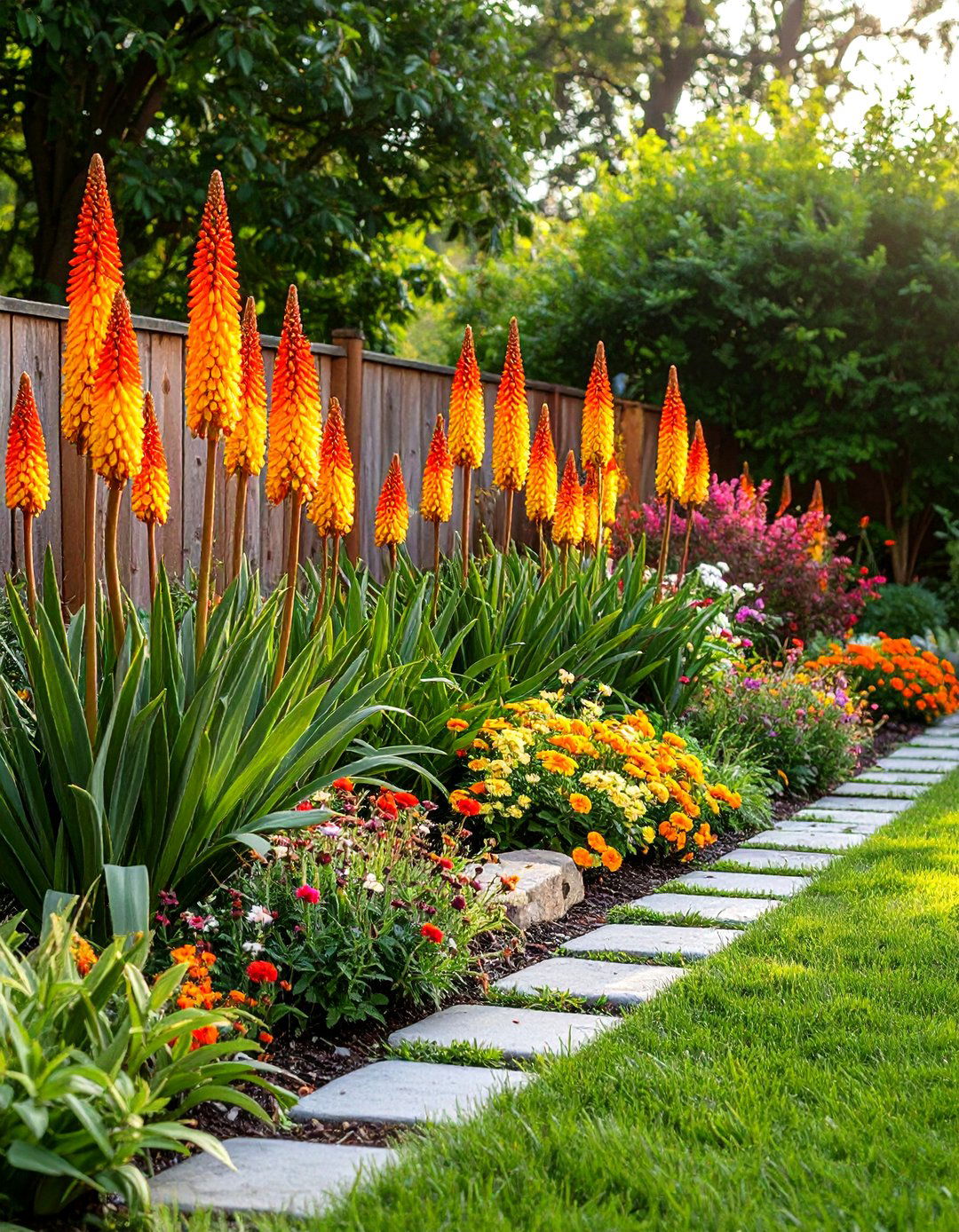
Colorful plants serve as true showstoppers, whether through flowers, foliage, texture, or fragrance that catches attention and creates dynamic displays. Showy specimen plants work as focal points when chosen for outstanding characteristics like spring flowers, interesting branch structure, or brilliant fall leaves. Plants like red hot pokers bring fiery color with red and yellow displays growing to 1.5 meters tall, creating striking focal points. Striking specimens often feature magnificent branch structure with leaves that change from lime green in spring to crimson red in summer. Sword-shaped leaves that fan out arching upward offer great contrast to other plants with bronze and green coloring and red margins. Plant colorful specimens with room to breathe, surrounded by simpler plantings that don't compete for attention.
15. Garden Gazebo Focal Point

Gazebos are small structures or garden pavilions usually sited for views, with origins believed to come from English words meaning "I shall gaze". These charming structures provide sheltered viewpoints while serving as prominent garden features that define spaces and create destinations. Garden structures like gazebos can become focal points that give you something pleasing to look at while creating interactive retreats for people and pollinators. Position gazebos to take advantage of the best views in your garden, whether overlooking water features, flower beds, or distant landscapes. Consider incorporating seating, lighting, or decorative elements to enhance their appeal. These architectural masterpieces add elegance to outdoor spaces, becoming focal points that draw the eye and create feelings of grandeur. Choose styles that complement your home's architecture and garden design theme.
16. Art Installation Garden Focal Point

Garden art including sculptures, trellises, arbors, mirrors, fountains, and wall art provide many options for creating memorable focal points. Contemporary art installations can include kinetic sculptures, light features, or interactive elements that change with weather or seasons. The fundamental question is how specific art works help achieve desired emotions in garden spaces. Metal flying flamingo sculptures, standing cranes, or decorative chicken statues can create charming focal points with personality. You can add elements outside that you might not consider inside your home, bringing interior decorating styles outdoors using similar colors and artistic representations. Choose installations that reflect your personality while considering how they'll look in different seasons and lighting conditions.
17. Raised Planter Garden Focal Point

Elevated objects act as focal points by giving them more prominence in landscapes, with raised urns at eye level standing out more than ground-level installations. Raised planters create immediate visual impact through their elevated positioning and can showcase seasonal displays or permanent plantings. Containers with flowers create focal points while reflecting your unique personality in garden designs. These features work particularly well in flat landscapes where height variation is needed. For formal courtyards, one-of-a-kind raised elements placed front and center work better than scattered pieces. Consider materials like stone, concrete, or metal that provide substantial presence. Available in various shapes and sizes, raised planters can be positioned across different garden focal points with versatile designs. Fill with bold architectural plants or seasonal color displays for maximum impact.
18. Garden Mirror Focal Point
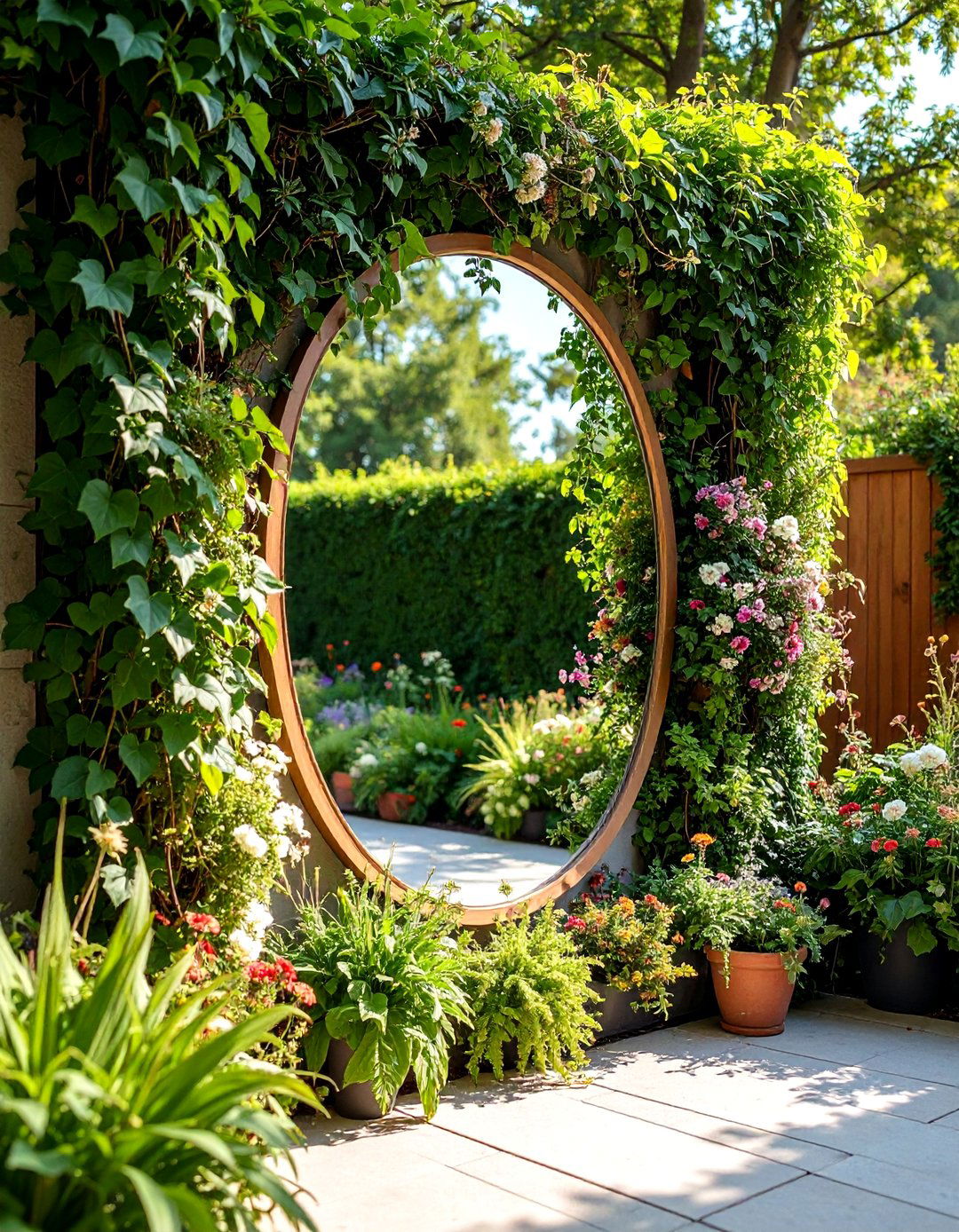
Mirrors are among many garden art options for creating focal points, often used to reflect light and create illusions of space. These reflective elements can make small gardens appear larger while bouncing light into shadowy areas. Simple structures like window frames paired with clipped shrubs encourage eyes to linger on garden areas that might otherwise be overlooked. Position mirrors to reflect the most beautiful aspects of your garden, such as specimen trees, flower displays, or architectural features. Garden mirrors can add emotional interest by creating unexpected reflections and visual depth. Choose weather-resistant mirrors designed for outdoor use and consider framing them with climbing plants or architectural elements. Reflective surfaces can make gardens look bigger by serving as "nature's mirror" while creating interesting visual effects.
19. Seating Nook Garden Focal Point
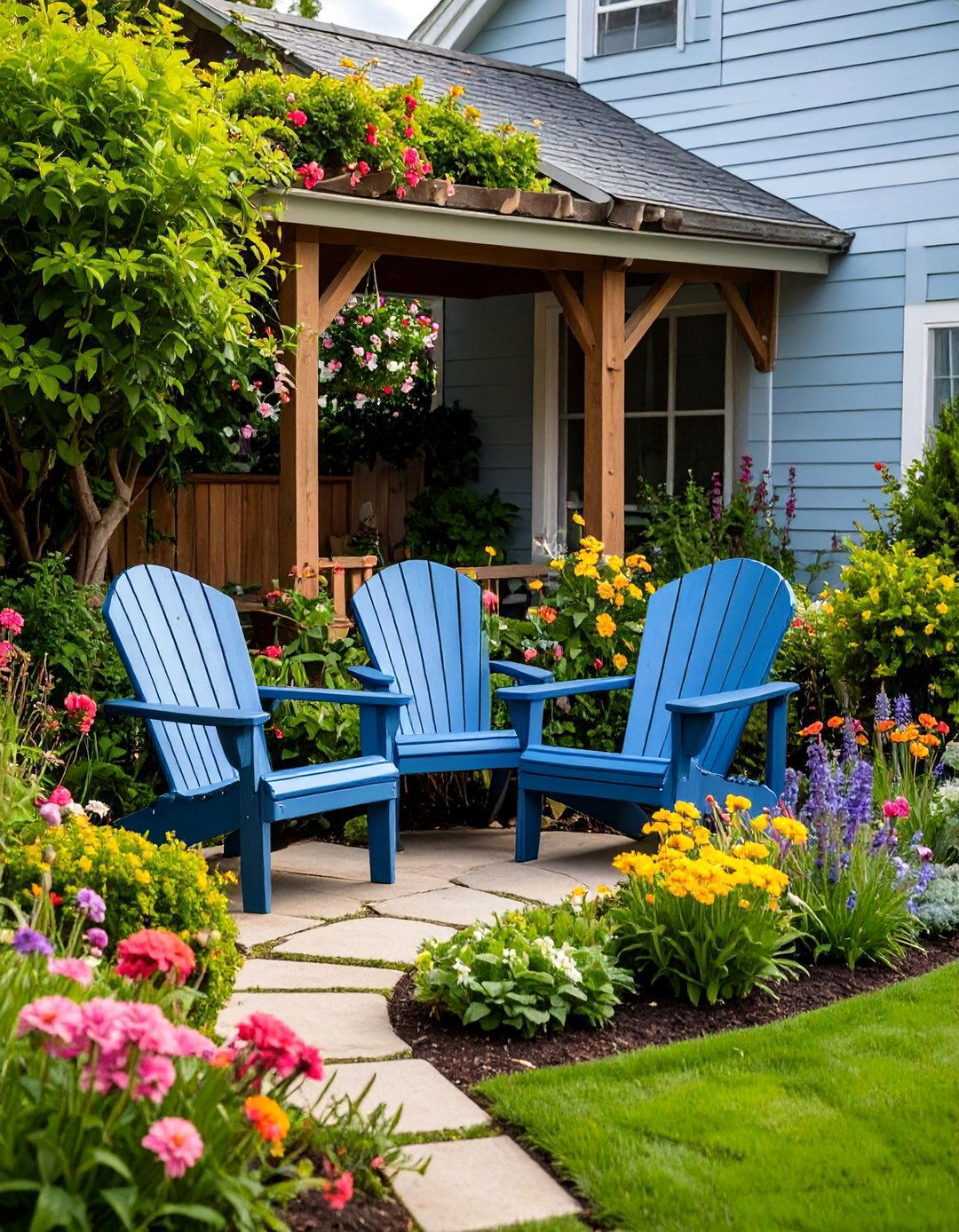
Inviting seating nooks draw visitors into gardens by placing chairs, benches, and lounges where they act as both destinations and focal points. Benches delight the eye while providing interactive retreats for people, creating party atmospheres with lights and lanterns. A pair of Adirondack chairs at pathway ends makes attractive vignettes viewed from houses while giving reasons to wander down garden paths. Comfortable benches or cozy seating arrangements beneath structures provide serene spaces for pausing, unwinding, and connecting with nature. Place seating where it can be viewed from other garden areas or from inside homes to create focal points. Mixing and matching different seating types creates cozy spots for whole families, from couples wanting to snuggle to independent teenagers.
20. Garden Obelisk Focal Point
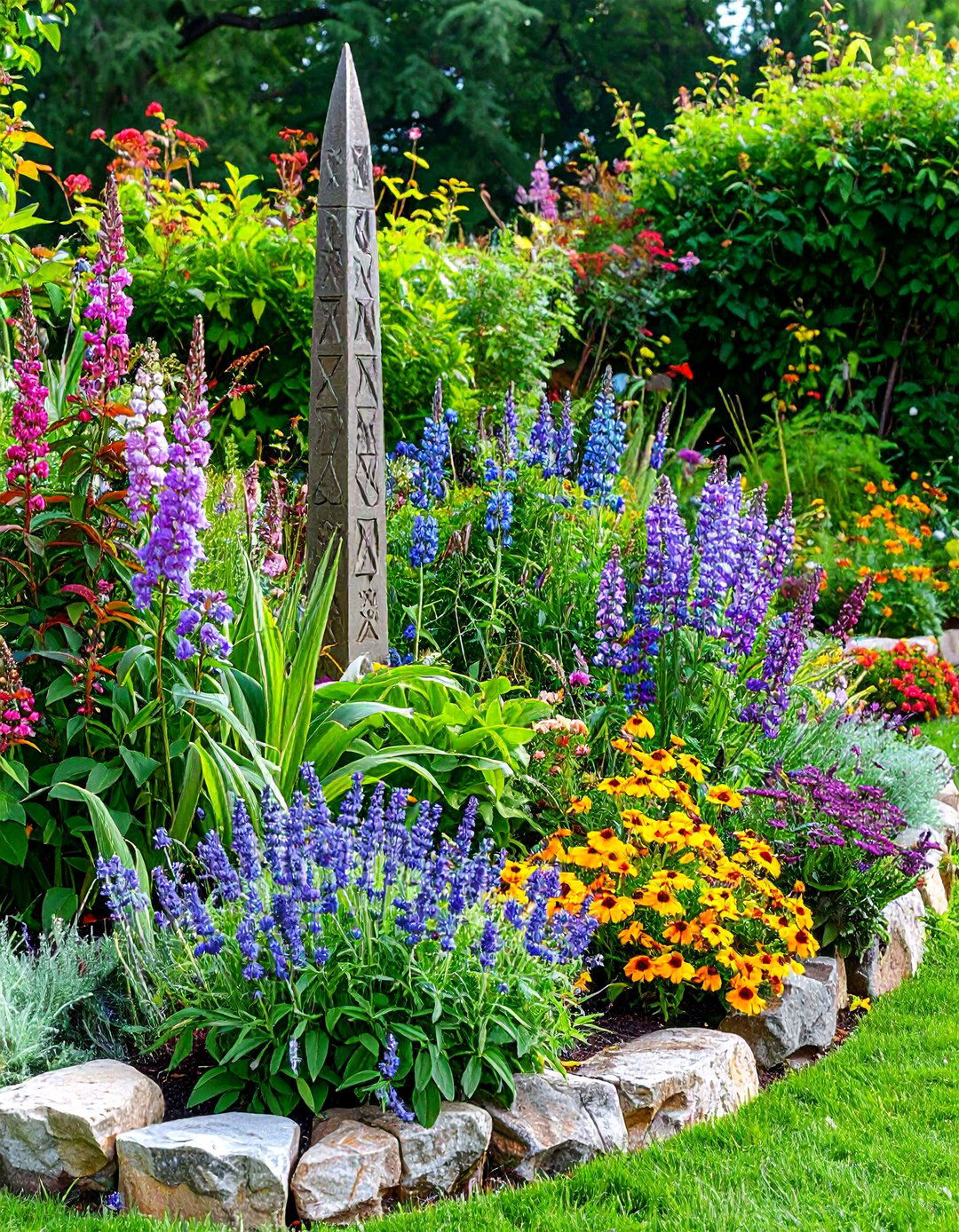
Obelisks provide understated elegance when chosen as sculptures with simple forms for formal garden focal points. These tall, slender structures create strong vertical elements that draw the eye upward while providing support for climbing plants. The effectiveness of focal point placement comes down to what elements line up with, such as views from kitchen windows being perfect places for prominent features. Obelisks work particularly well in formal garden settings where their geometric forms complement structured planting schemes. These focal points can be moved during the year to cover fading bulb foliage, highlight particular specimen plants, or add drama for gatherings. Choose materials like stone, metal, or wood that suit your garden's style. Position obelisks in garden bed centers surrounded by lower-growing plants to maximize their architectural impact.
Conclusion:
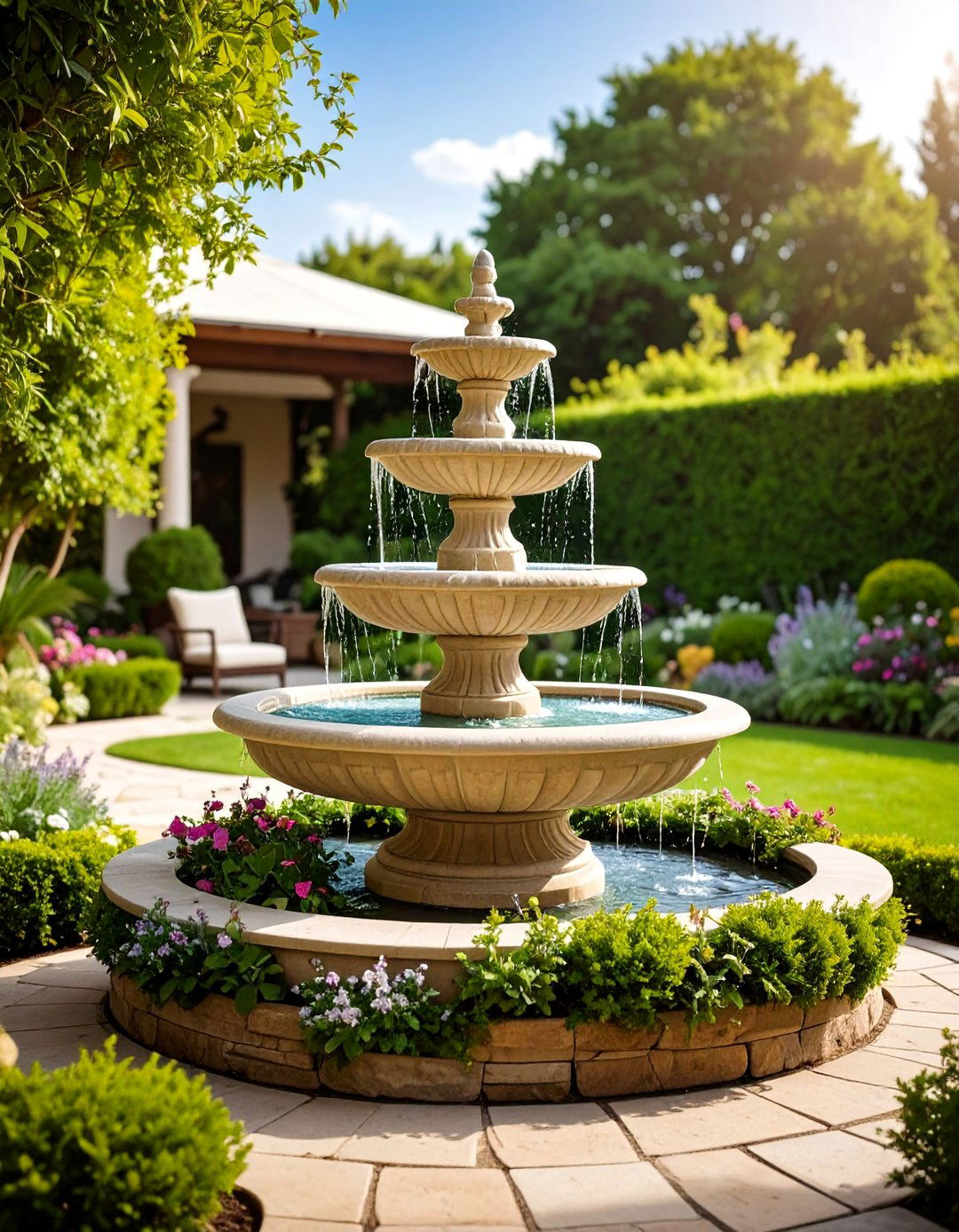
Creating effective garden focal points transforms ordinary outdoor spaces into captivating landscapes that engage visitors and enhance property value. Focal points are important tools for garden designers because they control how people view gardens and create special moments when used correctly. Whether you choose water features, sculptures, architectural elements, or specialty plantings, successful focal points draw attention while complementing surrounding elements. Remember that less is more - avoid overcrowding areas with multiple objects and let focal points reflect your unique personality. Planning and planting gardens is like painting pictures, with focal points serving as unique accents that enhance your outdoor living space.



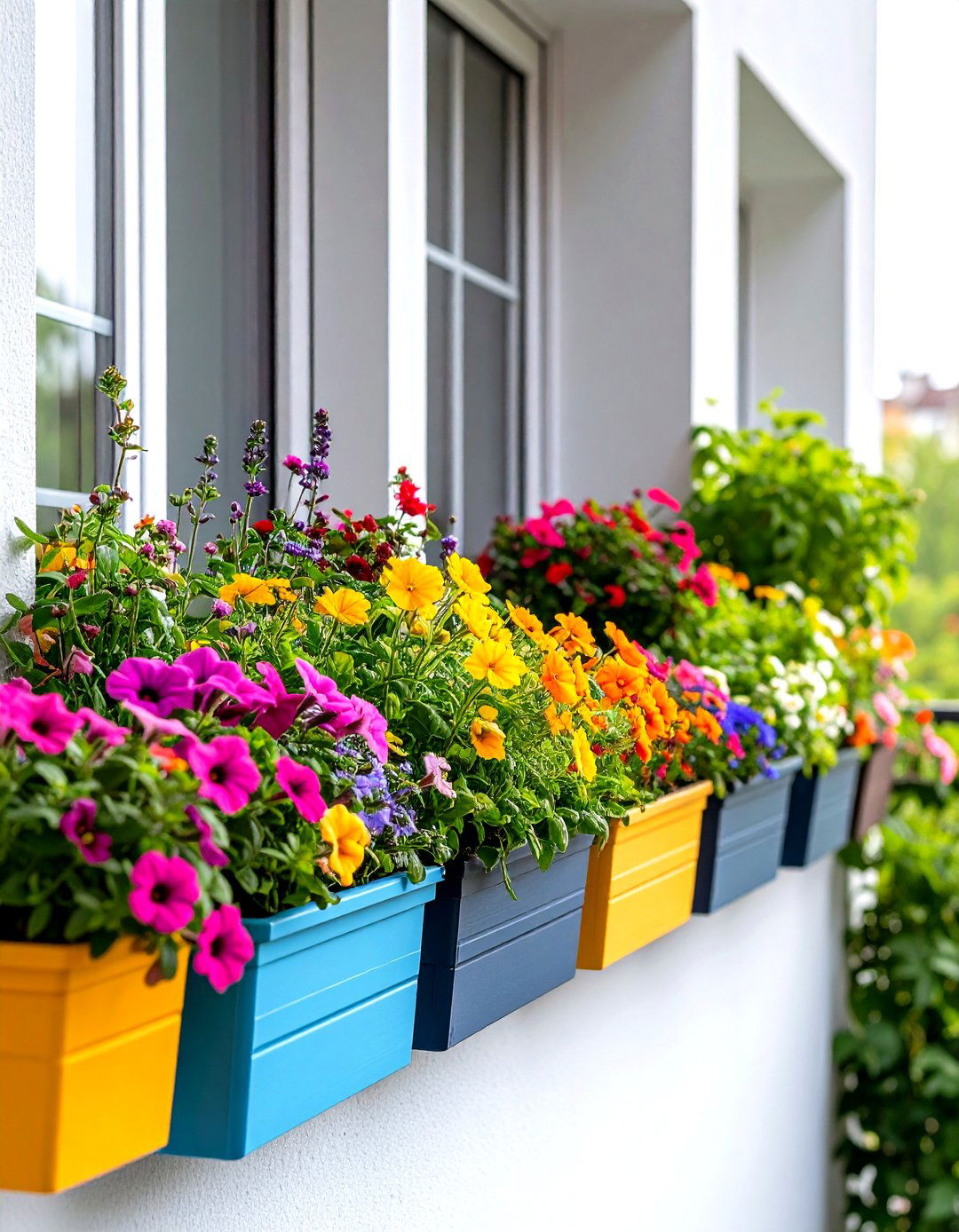
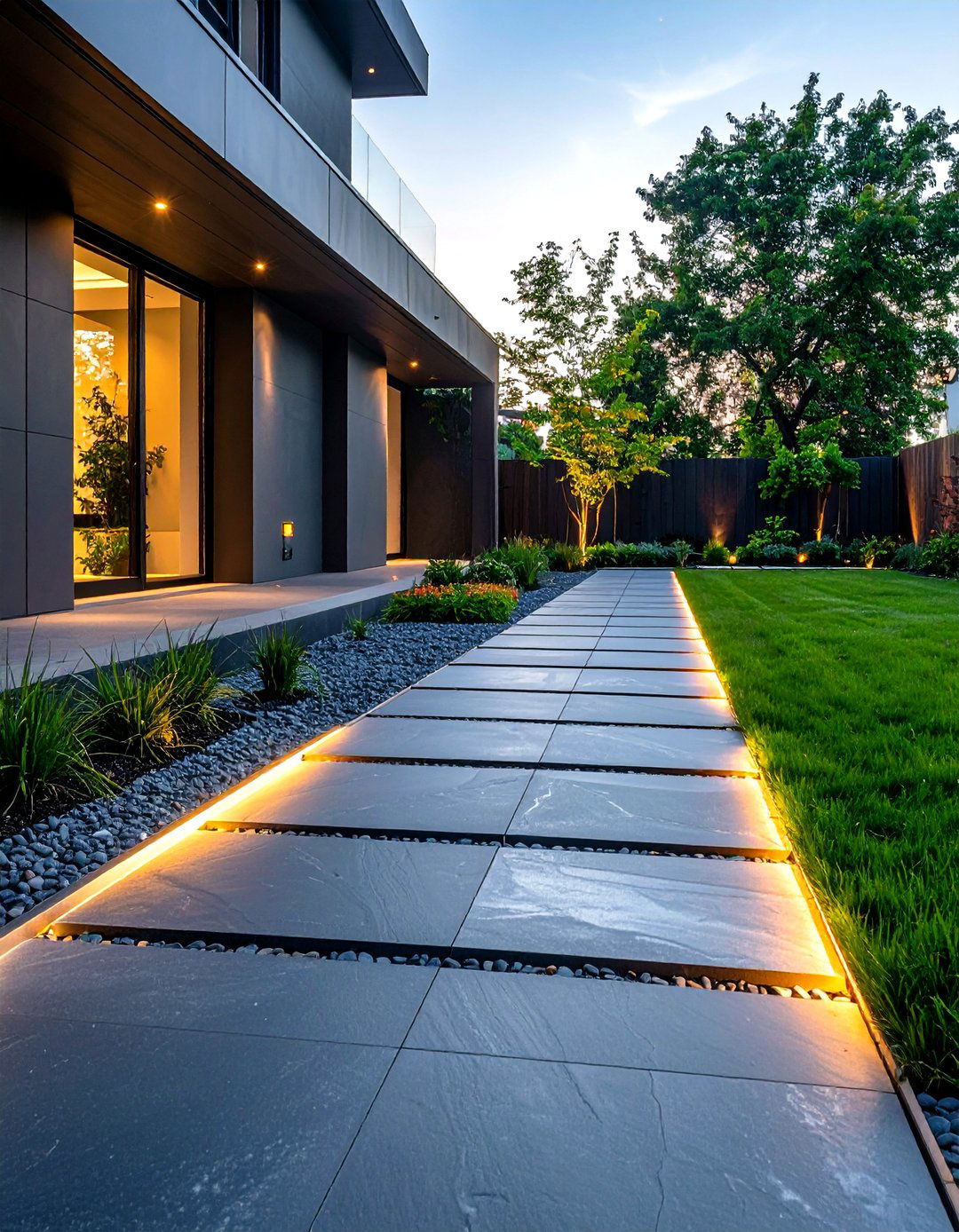
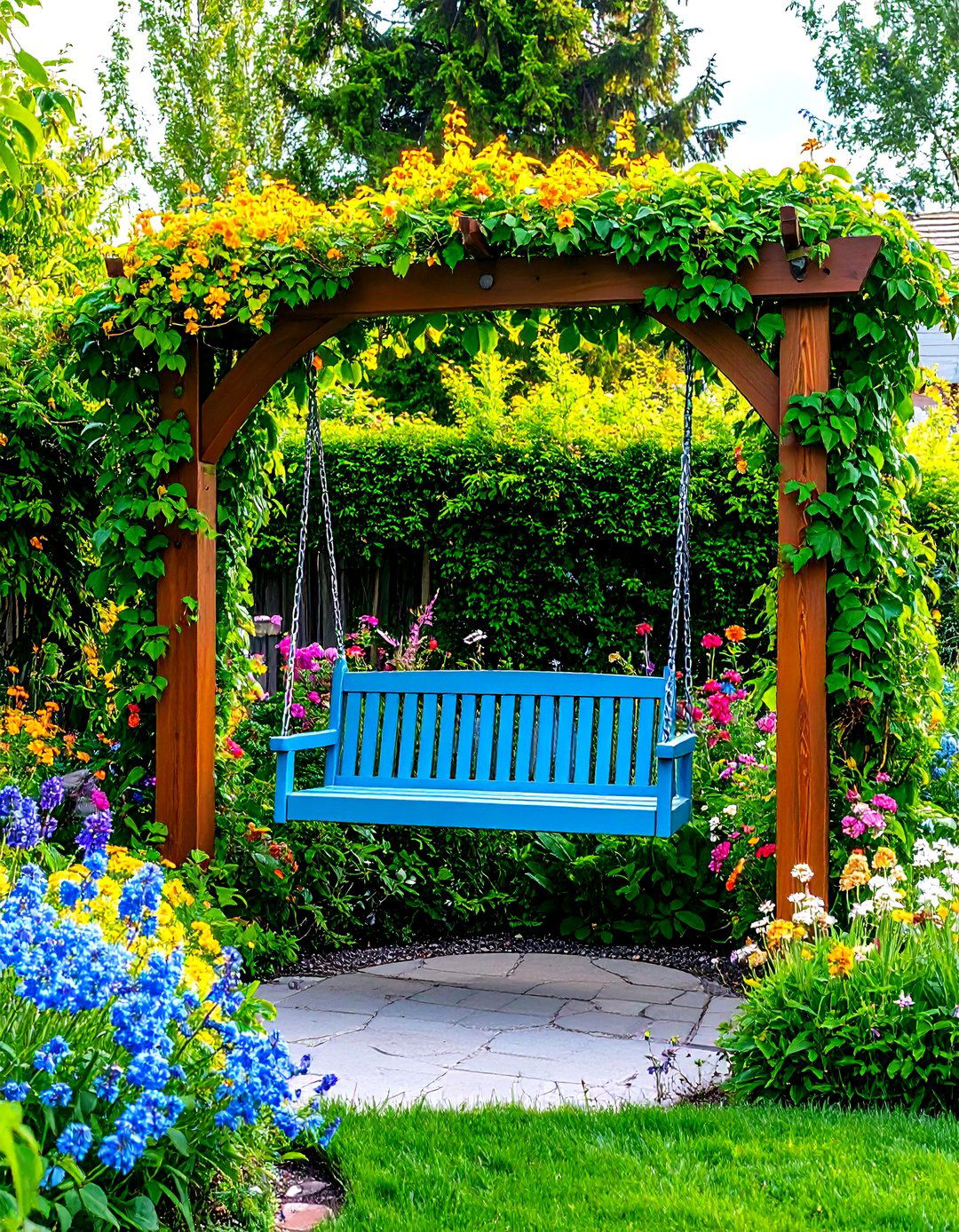

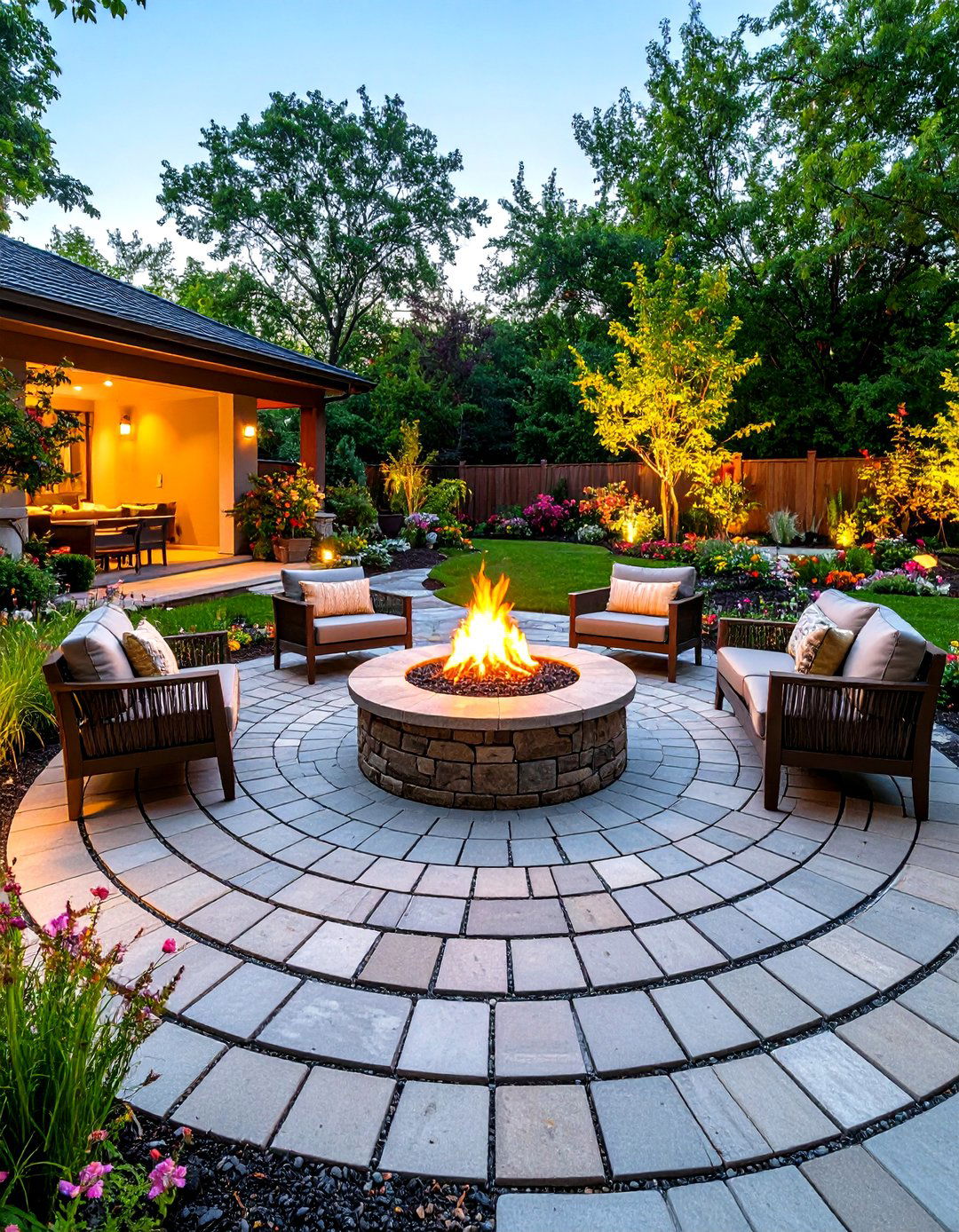
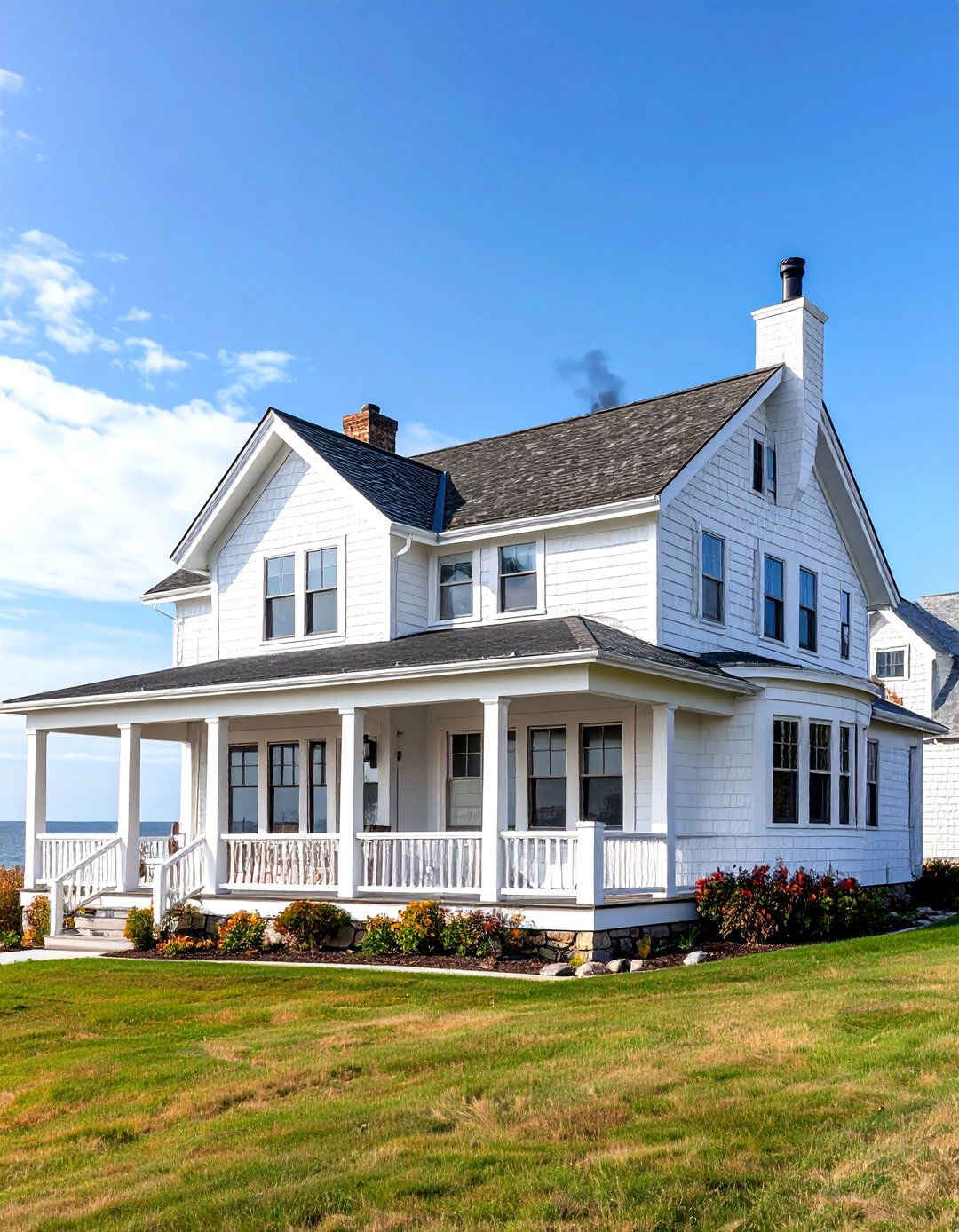
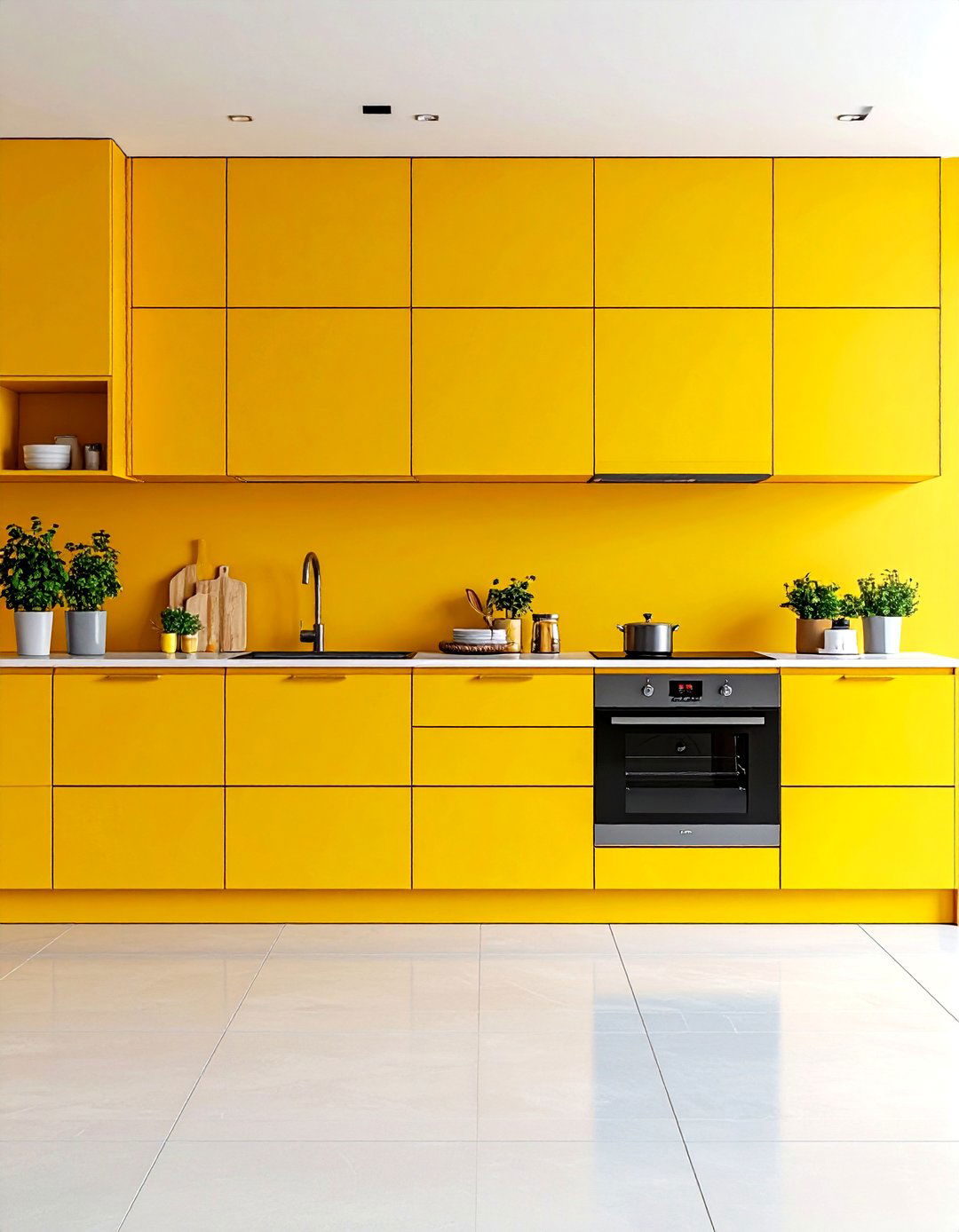
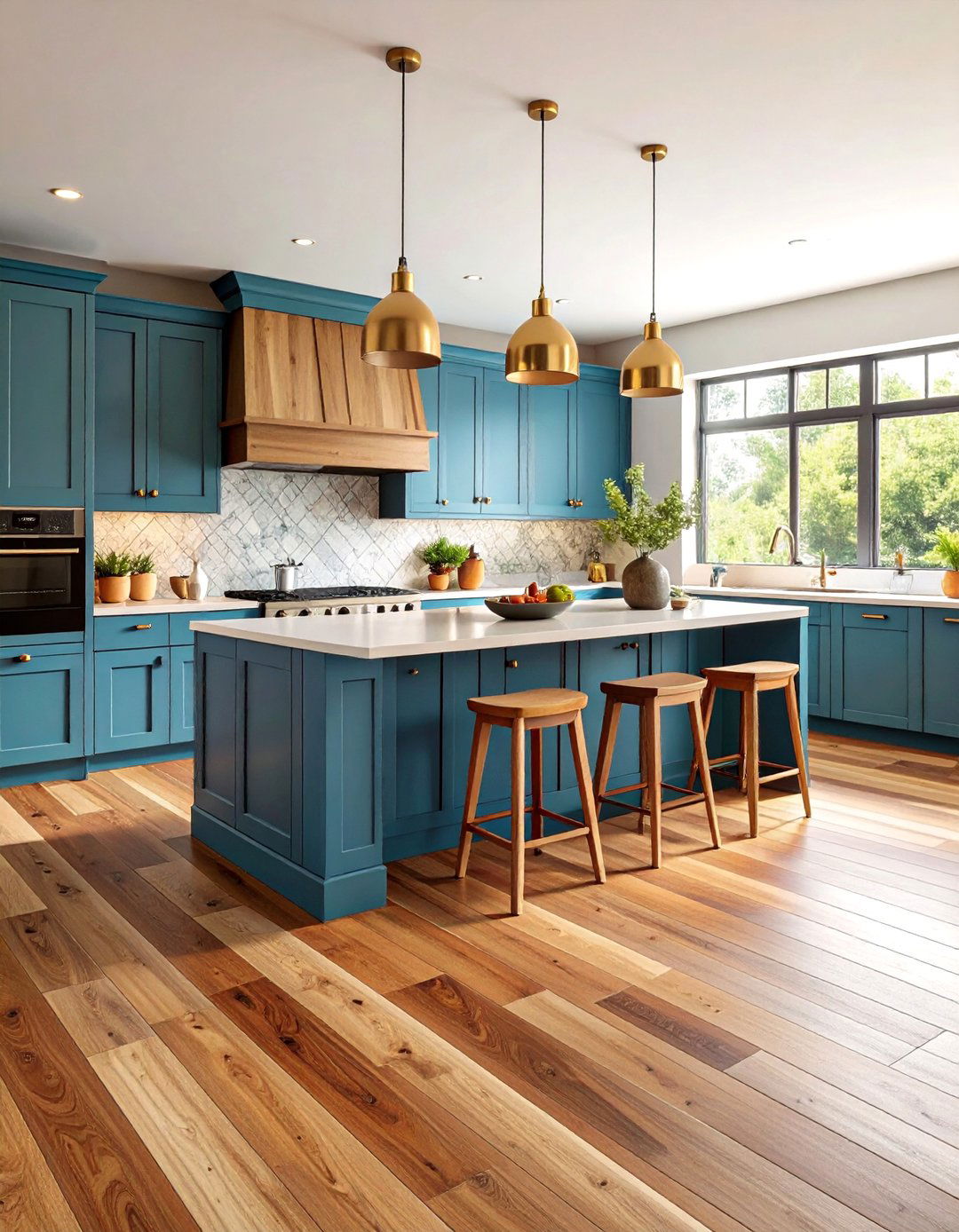
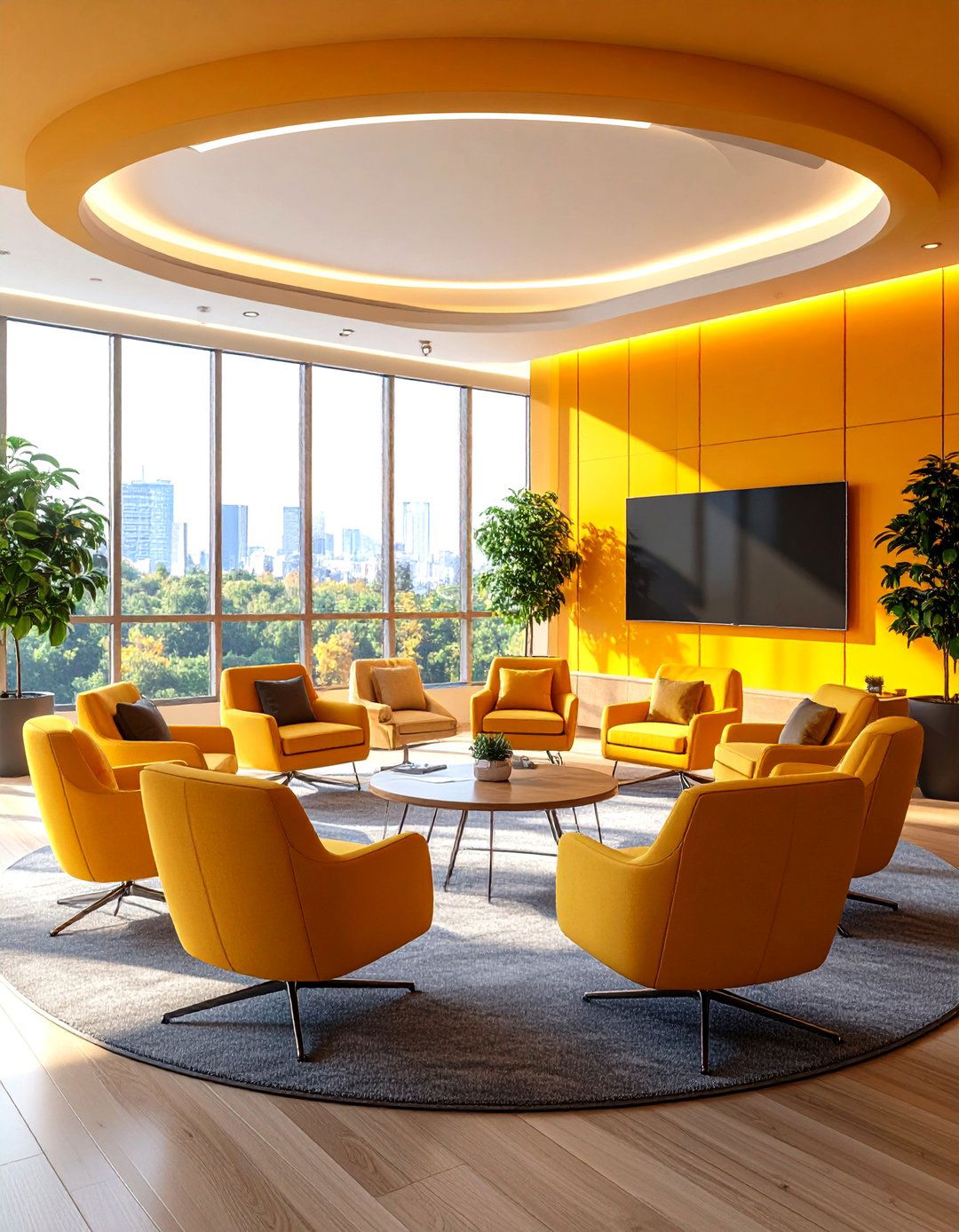
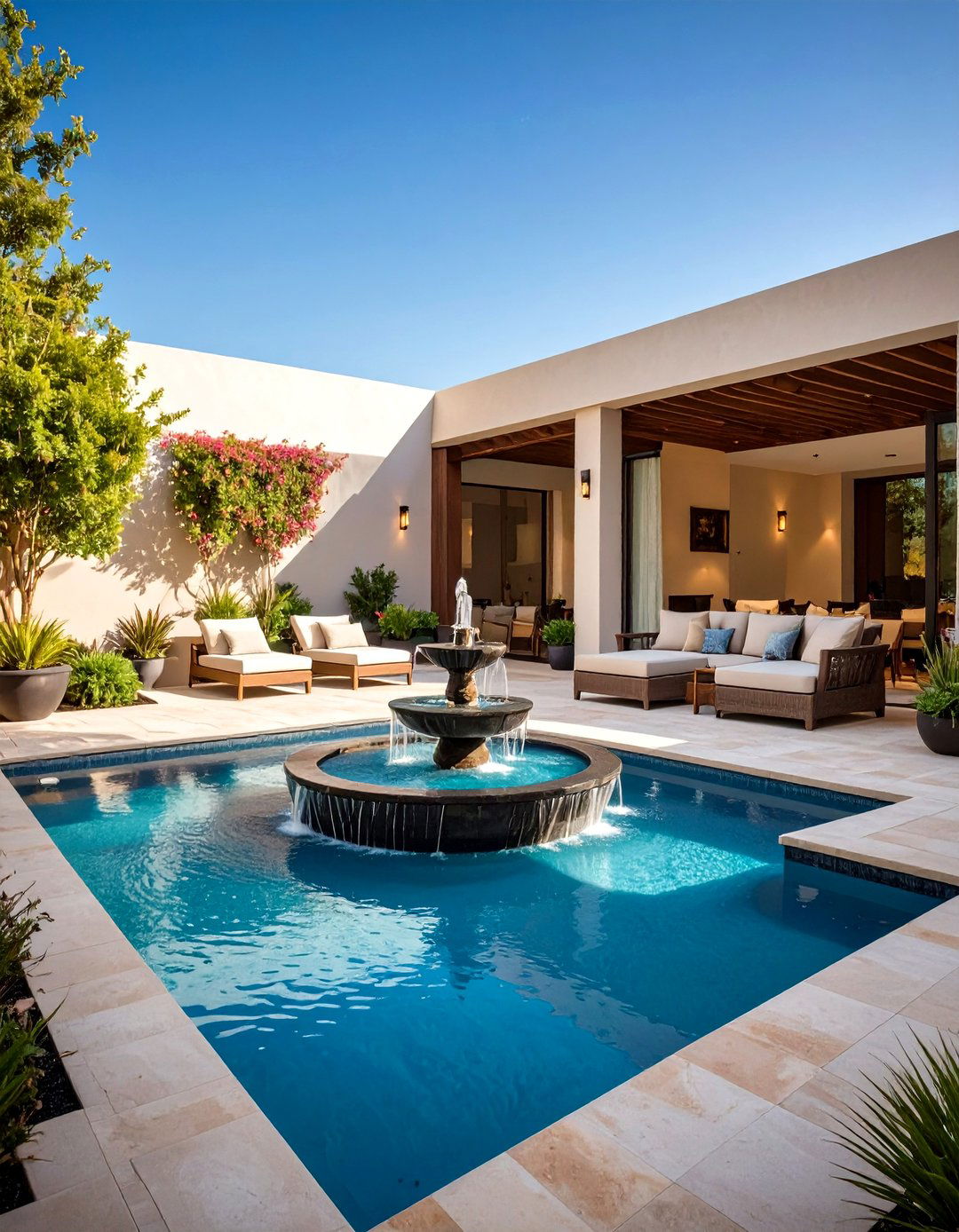
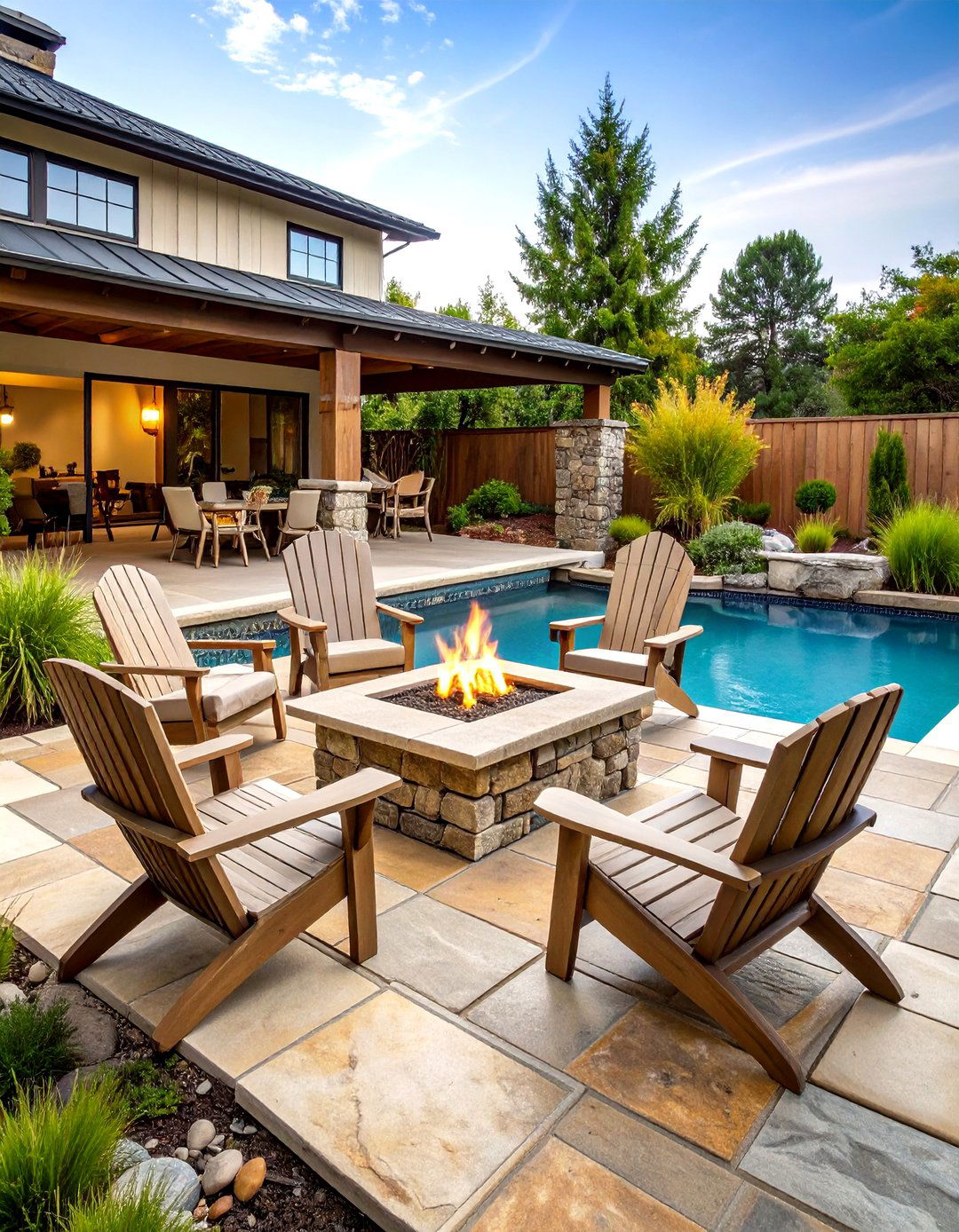
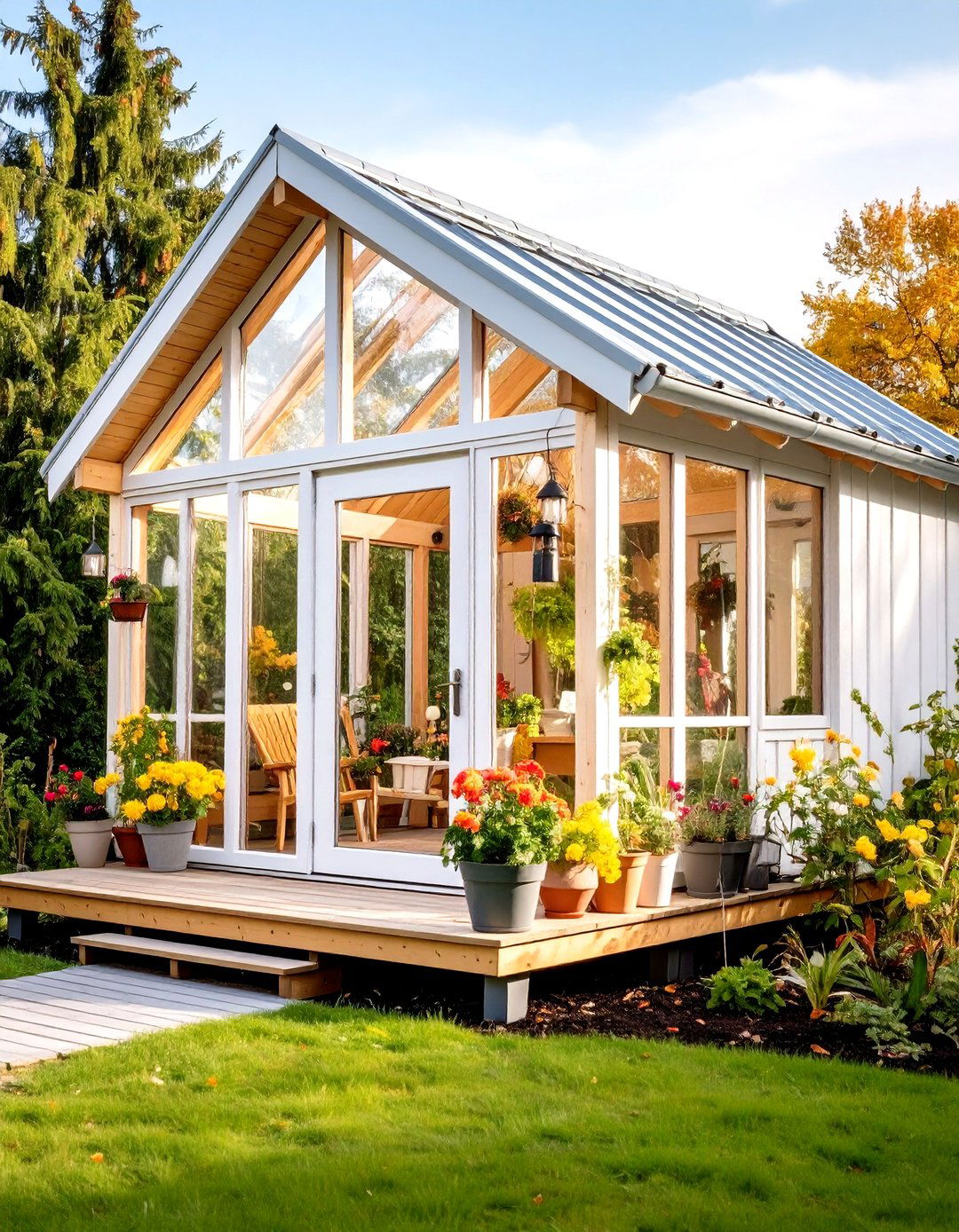
Leave a Reply